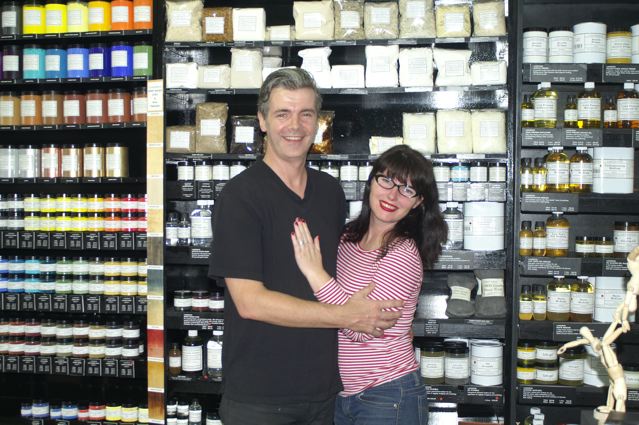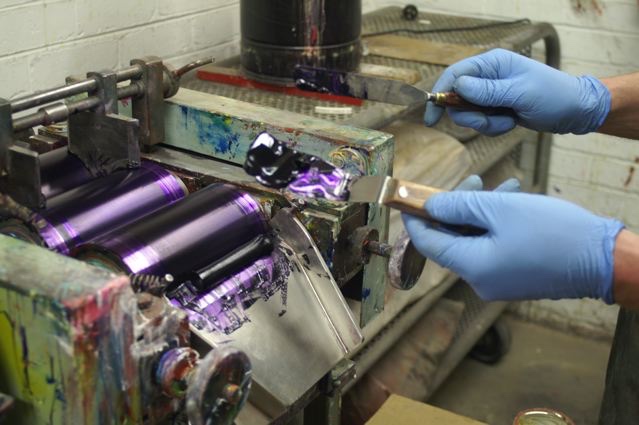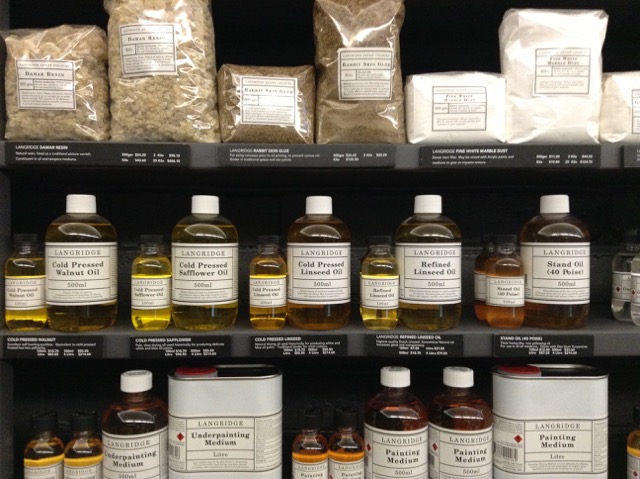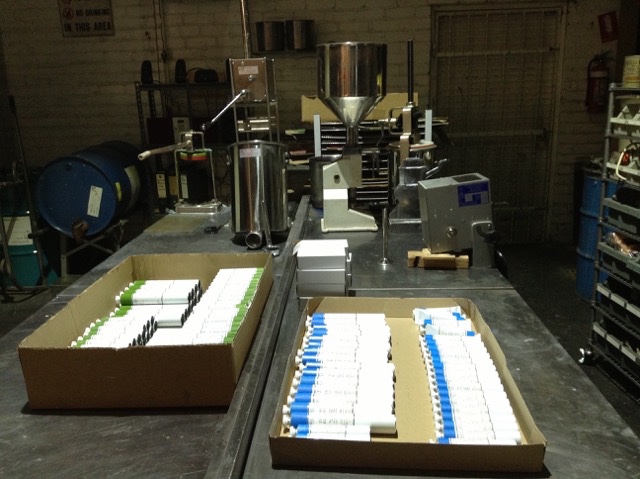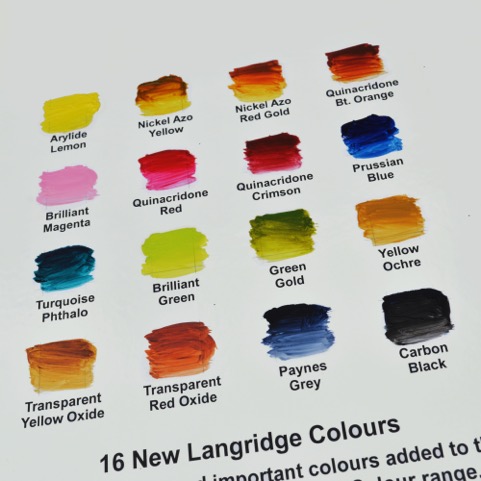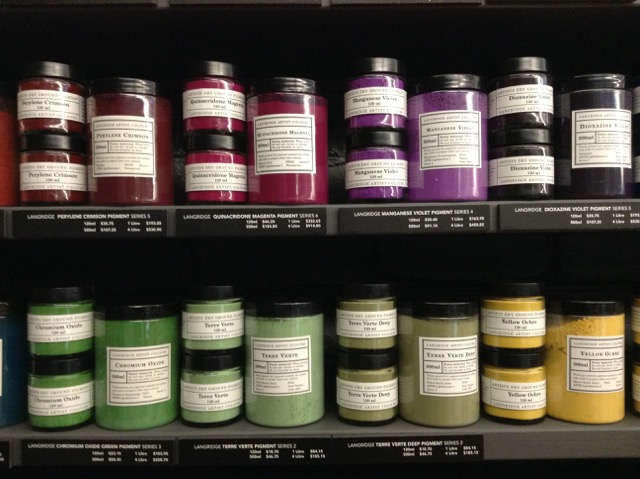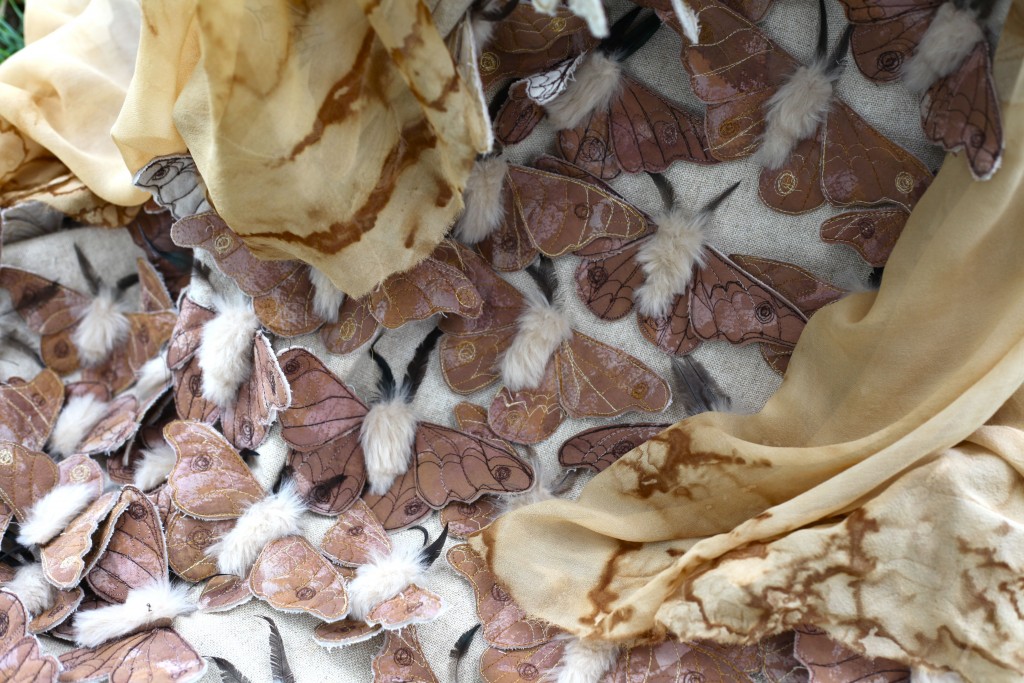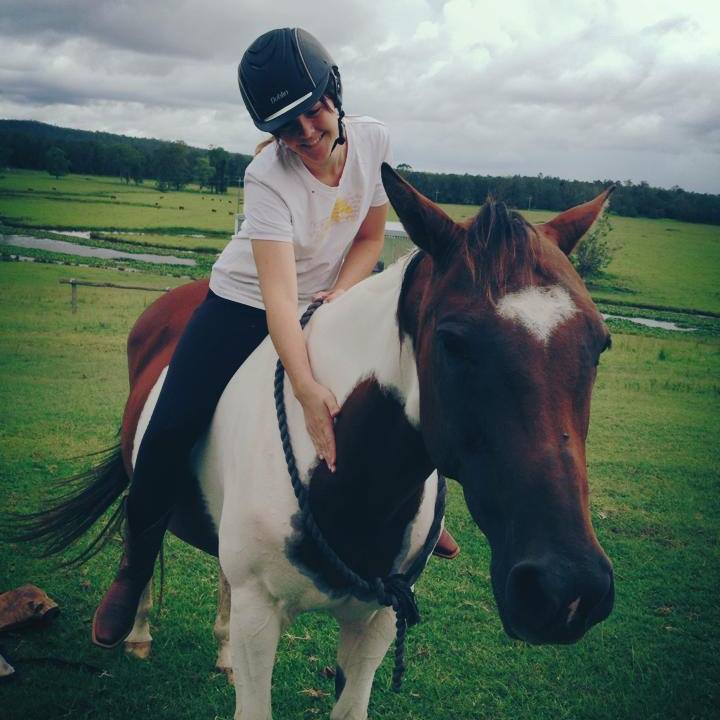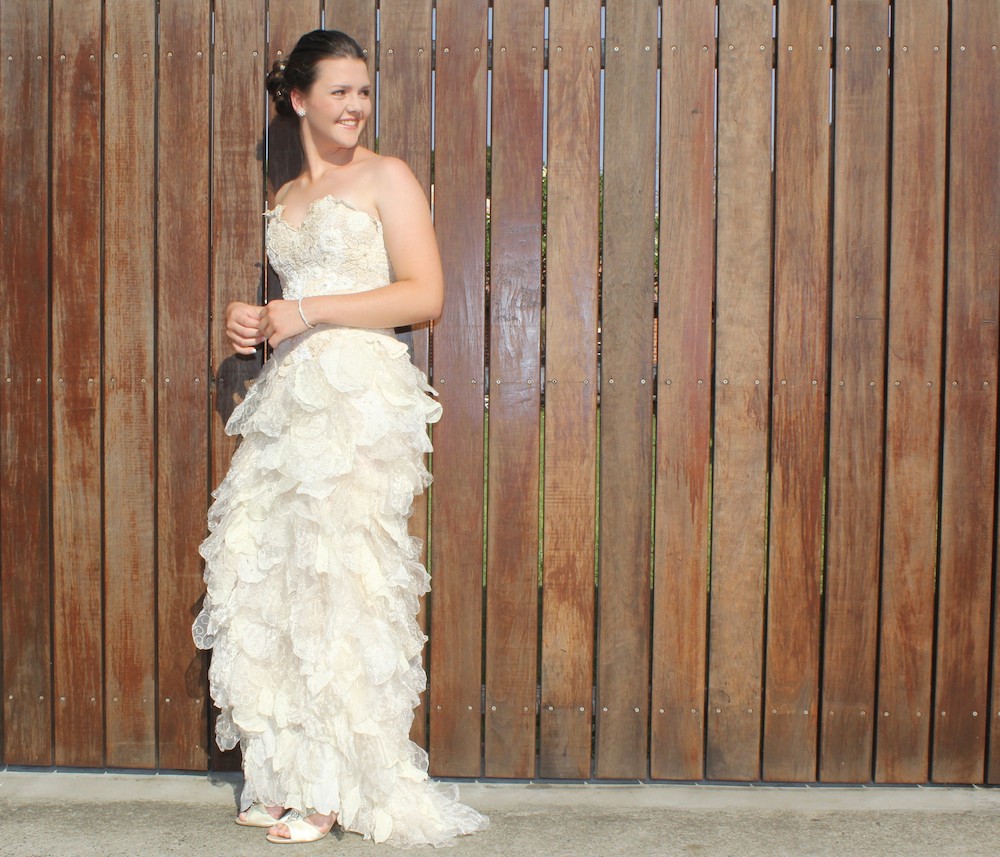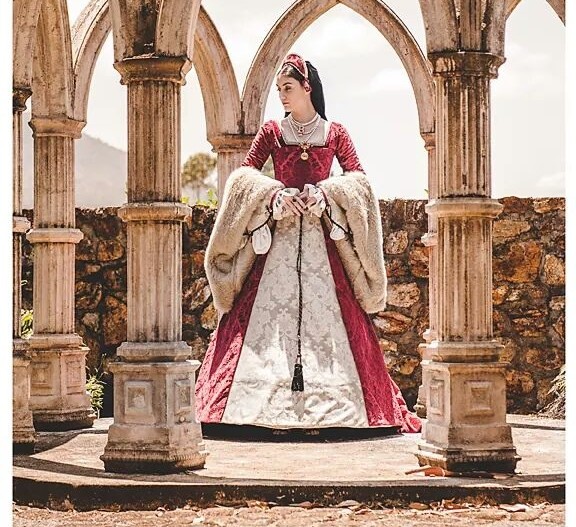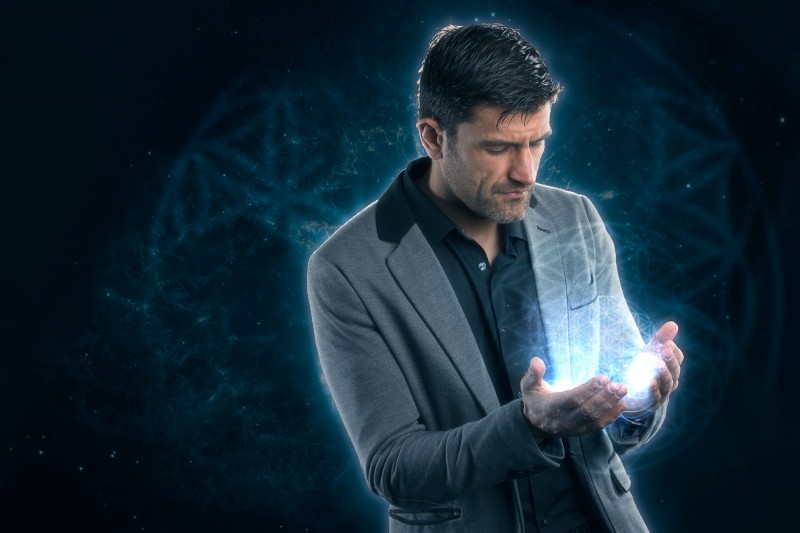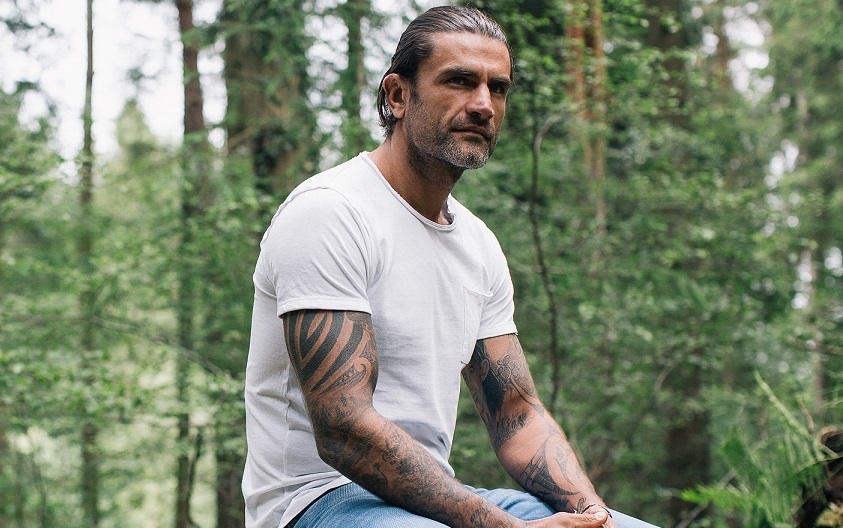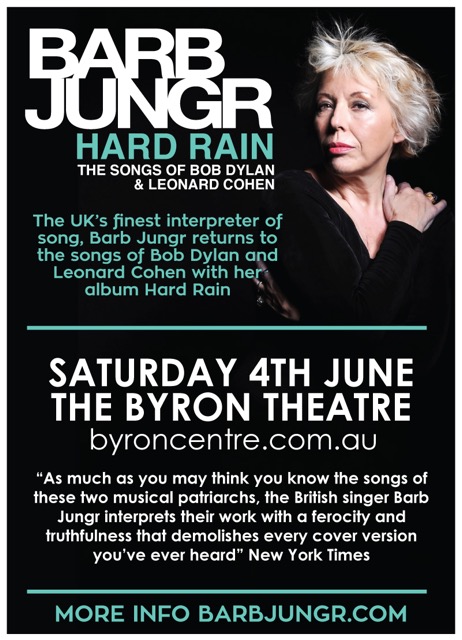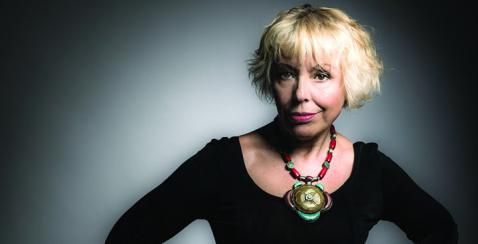The post Her Island Home – Janet De Neefe on the Spice(s) of Bali Life appeared first on .
]]>Janet De Neefe is pounding fresh spices in a mortar and pestle in her kitchen in Ubud, Bali. There’s candelnuts, and coriander seeds, black peppercorns, red shallots, garlic, chillies, lemongrass stalks, galangal, fresh turmeric, lime leaves and palm sugar.
The aromas have my tastebuds on fire.
The Melbourne ex-pat is about to make one of her favourite Indonesian dishes – a mouth-watering golden kare ayam (chicken curry) as well as an assortment of other spicy and fragrant side dishes.
On the other side of Janet’s kitchen bench, and looking somewhat out-of-place, is a large jar of Vegemite – a reminder of Australia and her home for the first 25 years of her life.
“Vegemite reminds me of home – of course – and I love it on toast for breakfast,” Janet says, “but it’s the exotic Indonesian cuisine that’s captured my heart.”
From the moment the Melbourne teenager stepped off a plane in Bali in 1975 she was fascinated with the food and culture of The Island of the Gods. “I was besotted with the mouth-watering cuisine. It was just so different to what we were used to in Australia,” she says.
Janet returned to Bali in 1984, and on only the second day of her holiday, she met her future husband, Ketut Suadarna. One chapter of her life closed and another opened and five years later the couple were married. Over the next 30 years, and with no formal culinary training, Janet (with the help of Ketut and her family) has built a food ’empire’ in Ubud of which many successful restauranteurs would be envious.
In 1987, and after learning as much as she could about Indonesian food from her sister-in-law, the couple opened their first restaurant – Lilies – in the famed Monkey Forest Road. In 1990 they established the Honeymoon Bakery and Guesthouse and in subsequent years Janet and Ketut opened two more restaurants – Casa Luna and Indus – as well as the Honeymoon Kitchen which operates from their guesthouse.
There’s also the popular Casa Luna Cooking School that attracts tourists from around the world keen to learn about Indonesian cuisine; the highly successful Ubud Food Festival which Janet started in 2015 and more recently, the exotic Spice Island Cruises.
Janet and Ketut also own a homewares store – Casa Luna Emporium – and in 2002 Janet started the Ubud Readers and Writers Festival as a way to draw tourists back to the island following the Bali bombings.
And if that’s not enough on their plate, the couple also have four children – Dewi 27, Krishna 25, Laksmi 22 and Arjuna 20.

FAMILY AFFAIR: Janet De Neefe, her husband Ketut Suadarna and children (from left) Krishna, Dewi, Laksmi and Arjuna at a recent ceremony in their Ubud home.
“I’m crazy about Indonesian food, which I feel is totally underrated,” Janet says. “I want to put a spotlight on this exotic spicy cuisine, which I describe as the ‘Italian food of the east’. It nourishes you from the inside out and is very medicinal. We don’t used canned or processed food and all our spice pastes are made from scratch with fresh ingredients sourced daily from the local markets. At the moment I’m crazy about jackfruit curry, I love smoked duck and my passion is baking sourdough bread with a host of different and unusual ingredients.”
Janet’s baking obsession has led her to invite sourdough ‘guru’ Chad Robertson from San Francisco to attend next year’s Food Festival, which will be held on April 26, 27 and 28.
Since its inception four years ago, the festival has grown into south/east Asia’s leading culinary event, showcasing Indonesia’s diverse cuisines, extraordinary local produce and shining a spotlight on culinary heroes – both new and established.
From the opening night party to the final mouthful, this year’s event held in April and presented by ABC was enjoyed by more than 12,000 hungry foodies – a 30 percent increase on last year’s attendance.
“The festival has seen enormous success and even though it’s mainly an Indonesian audience, it’s also attracting lots of westerners as well,” Janet says.
Janet’s latest food adventure, her famed Spice Island Cruises focuses on a small, but lucky group of foodies and adventurers who set sail on the high seas on an old-fashioned teak Indonesian pirate ship across stunningly clear tropical seas from Ambon to Banda Neira. Banda Neira lies in the middle of 10 small, sun-drenched volcanic islands scattered in the wind-swept Banda Seas, 200km from Ambon. “To arrive by water makes it nothing short of magical,” says Janet.
From snorkelling and diving in pristine waters full of some of the world’s most diverse marine life, to onboard cooking demonstrations led by Janet, to visiting the famous Run Islands which were home to the best nutmeg plantations in the world in the 16th Century, passengers are taken on an odyssey to a part of the world that still remains largely untouched. (The next cruise, by the way, is scheduled for November.)
So what’s next for Janet De Neefe?
Well, there’s cooking tours to the Komodo Islands and other eastern regions of Indonesia, and knowing this indomitable woman, probably a few other secret plans as well.
With such a hectic schedule, how does she find the energy to keep going?
“Daily yoga and the gym keep me physically fit, food nourishes my body and the spiritual side of Bali keeps me grounded and centred,” she says, before she shares one more secret: “Oh and a glass or two of wine is always a good idea.”
The post Her Island Home – Janet De Neefe on the Spice(s) of Bali Life appeared first on .
]]>The post Making her Mark – artist Jess Lacroix and her No Bad Days appeared first on .
]]>“I was born in Ottawa, and both my brother and I grew up bilingual,” artist Jess Lacroix tells me, explaining the trajectory that has taken her from Ottawa to the Brunswick Head house where she’s currently living and working from. “I went to an arts-based school in Ontario, and when I was looking at Universities, I really liked the courses that the ANU in Canberra offered,” she says. “Originally it was meant to be for one term, but I got so involved with photography, drawing and textiles that I completed my degree there, with a minor degree in art therapy.”
Jess’s final project saw her produce a body of skatedecks, one for each city in Australia made from a wood source unique to each region, celebrated with hand-etched maps of the city on each deck
Back in Canada Jess set about throwing herself into an an arts career, becoming a full-time arts teacher, founding an arts program for children, as well as offering one-on-one visual sessions with children. “I found myself just constantly expanding,” she says. “I became really interested in the idea of art as therapy as well, so I started to do pop-up shop tutorials, I ran skype sessions, did long-distance education with my clients, and founded my little business NoBadDays, to give back to charities.”
If it sounds as if Jess keeps herself exceptionally busy – well, you’d correct in that assumption. “I’m just a firm believer in never living the same day twice,” she says. “If you’re not a passionate believer in something, why do it? I want to be inspired by the unknown, not by a 9-5 routine. Someone very close to me passed away recently, and that really confirmed for me that life is too short to waste – I want to live every moment with heart. He lived on the south coast, and grew a tea plantation, moving into creating artistic tea gardens, and then a creative collective for artists.”
This lifetime around, Jess was beamed in with a need to make art: “Art has always been apart of my life,” she says. “Since I was a child I can remember holding a pencil or paintbrush or anything that can make a mark – art is who I am, in every shape, way, and form; no matter where on the wild globe my itchy feet and knack for a one-way ticket lands me.”
Jess was only 16 when her peripatetic lifestyle began, travelling to California for a summer on an arts scholarship. “I was on my own, between San Francisco and LA, and I loved it…I started to experience a bad case of itchy feet,” she laughs. “Since then I’ve been to Iceland, all through the US and around Australia. I’ve been very lucky to connect with all sorts of artists on my journey included a film photographer who was shooting in the Grand Canyon, and I got to work with him.”
Byron Bay, she says, was on her ‘bucket-list’. “Every uni break I’d travel in Australia,” she says. “I took a large format camera to Uluru and lived there for a month photographing sunrises and sunsets. I had an art show from those travels in Melbourne and one in Hobart, but I’d never been to Byron, but then by a fluke occurrence, I met the manager of the YAC in Byron. She’d seen my work and asked if I would volunteer my services to do a mural – it was exactly the kind of thing I’m passionate about, so that was that – I came up here, loved it, and now I’m based up here full-time.”
Grounded, an acrylic paint mural that now graces the inside of the YAC big space, brings the native Australian paperbark tree indoors. “I wanted it to surround visitors with the endless nourishment and grounding properties of the exquisite Melaleuca Quinquenervia tree,” says Jess.
The work is created through layers – the richness in movement of the painted trees and its unconstrained roots connecting with the outside native flora and fauna when the painted doorway is opened to the bushland. And since she’s completed the YAC mural, she’s also created one for the Torakina Café in Brunswick Heads, as well.
Although Jess’s life (her partner is a local musician) and work is based in Byron at the moment, she misses her younger brother Dakota and her mother terribly, and travels home to Canada whenever she can. “I do try to organise shows so I can go back for a few months,” she says. “I just returned from a visit in Canada to see my family but I also organized a summer pop-up shop selling my hand-silkscreened t-shirts, and installed large format photography and skate-decks in various gallery spaces. What is odd though is that from the moment I got to Canberra, part of my heart has always been here. The art scene has simply enveloped me every time.”
As she describes her art practice it’s almost hard to keep up with her. “I build and design skateboard decks, from scratch – pressing, moulds, veneers, scraping, shredding, and carving so I can get them just how I want them. I hand paint customized surfboards, I sketch and scribble up album art for musicians; I do film photography and videography; I do t-shirt silk screening – building all my own silk screens – palm trees and pineapple skulls is the kind of vibe my work has; I do murals, jackets, cards – anything that grabs me really,” she says.
From spontaneously mucking up her surfboards in Byron Bay to spray painting deck art on vintage Z-flex’s in New Zealand, “Travelling solo through my art has totally taught me to dare to just dive in, every time, and go wild with the madness regardless of what looks good on paper. I strive to do something that truly matters, with my art. That’s everything to me,” she says. “I feel like if your art can touch or inspire or do something, anything, for one single person in a crowd, that makes it all pure gold and worth all the blood, sweat, and tears.”
To say that this young artist is inspirational is putting it mildly. As they way, watch this space.









Jess’s Instagram: @nobaddays_est.never
The post Making her Mark – artist Jess Lacroix and her No Bad Days appeared first on .
]]>The post The Magic of a Master Healer – Kenji Kumara brings Quantum Lightweaving to Australia appeared first on .
]]>The first thing that strikes me about healer Kenji Kumara, is how lightly the healing mantle sits on him. Here is man with over 48 years experience in the human potential movement, with degrees in education and psychology, who has studied with some of the leading visionaries of our time, but it turns out his favourite morning activity is to read the sports pages of his local newspaper with a cup of coffee. Not only that, but he skips breakfast and sleeps in as late as he can on some days.
“I only get up really early when I need to,” he tells me. “I need my rest for the work I do, so I ease my way into my working day.” At the moment, the 72-year-old Japanese American, who was born and raised in Berkeley, California, is living in Sedona – a place renowned for its healing energy. “I’ve realised that the work I do is my social life. I get a lot out of teaching, and really, the world doesn’t have that much to offer me,” he says.
It’s his Quantum Lightweaving that Kenji is passionate about. He will be hosting a five-day residential retreat at Gymea Eco Retreat and Spa (near Uki) from September 19-23rd. For more details go to: kenjikumara.com/australia-retreat/
Through his decades of healing work he’s created a quantum level transformational system that produces quick and gentle on-going shifts in consciousness, mind, body and emotions – his ‘quantum light weaving’. He says that ‘anybody’ can learn his work, and that his teachings are geared towards leaders and teachers who are ready for their next step in quantum consciousness.

Kenji Kumara is giving a one-off five-day residential retreat at the beautiful Gymea Resort near Uki.
Kenji is in private practice and is a contemporary energy medicine specialist (CAM), metaphysical technician, trans-dimensional visionary and inspirational teaching channel for ascended energies.
One of Kenji’s great attributes is his humour, and he easily mixes the mundane with the magical, talking about the difficulty of squishing into plane seats in the same sentence as he talks about channelling ascended master energies. For Kenji, it is all life – and ultimately, all love – for him, dedicated as he to his truthful path in life, connecting to the Christos energy he lives and works with.
He’s excited to come to Australia next month, where he will be teaching and giving workshops, feeling that he’s had a connection with the land through some past lives before. “I’ve got no doubt that I’ve had a connection to Indigenous Australians and also to the landscape,” he says. “I’ve often felt it calling to me.”
In a way, his journey here came about because of a bit of ‘lightweaving’ – he mentioned to an Australian member on a call that he’d love to come here and Vanessa, who comes from a banking and corporate background, decided that she’d like to try and organize Kenji’s first visit to Australia.
One of the many interesting aspects of Kenji’s teachings is grasping the idea that anything we plan on the earthly plane, has, in fact already happened on what he calls the ‘interplanes’. “What I’ve learned is that everything is happening simultaneously,” he says. “If you think of something, it’s in fact already happened. For me, the important thing is to hold the space for people to come away being much more illuminated in all aspects of their being, and to recognise the illusions and false perceptions they’ve been operating under.”
A Kenji meditation often starts with a ‘no hold bars’ statement. Despite a huge amount of compassion and empathy for people’s ‘problems’, he believes that all of us, no matter what is going on for us, can leave it behind in order to connect with the divine. “I don’t care if you’re going through a terrible divorce, if you’ve become bankrupt, or even if you have a terrible illness,” he says, “leave it behind. Connect with who you truly are. Align with the field of oneness is a way that is reflection of your spirit, and you will shift from separation to unity consciousness, that’s for sure.”
And when he talks of leaving difficulties behind, he’s known a few. “I understand the kind of thing people can go through,” he says. “I’ve had a number of near death experiences in my life, and once I was homeless for six months. I’ve had periods where I’ve had heavy credit card debt, and at one point I went bankrupt which was a low point. There are some teachers – and I can say this from direct experience – who are remarkably short on empathy, but talking from your intellect is not a way to help people. When you teach from experience it’s much more powerful, it’s like AA, the most powerful way to help an alcoholic is to be a fully-recovered alcoholic, because they truly understand what it feels like.”
It was his own self-healing that kept him going during the tough times. “I just kept on with my spiritual and energetic activations,” he says. “I love doing these activations – they blow me away. They’re just in my bones, so for me personally I don’t notice it so much but the people receiving them are just over the moon about them, and the healing they experience is miraculous.”
I tell Kenji I can personally attest to that – some years ago I was listening to one of his replays, where he did an activation. I had a sore ankle at the time – and during the activations I felt this incredible light and warmth go into it, and the pain completely disappeared. I was amazed that it could still work on a replay of a show thousands of miles away from me.
“It’s extraordinary to me too, and yet in a way it’s ordinary because it’s just what happens,” he says, mildly. “I’ve just learned to accept that it works. When I run workshops I tell people that by the end of the first day they’ll be able to receive a light ‘wave’. A lot of students don’t believe me, and they’ll tell me that. But I just have the knowing that people will get it, and can do it – and honestly some of my students can do it better than I can. Anybody on any level of evolution can do this – everybody can feel. Not everybody can be clairaudient or clairvoyant, but everybody can feel. I had a student who had brain damage as the result of an accident, and she was attempting to heal herself. Something shifted every day during the training – she described it that it felt as if something was popping open and releasing in her brain. There’s no limit to this energy.”
During the five-day retreat at Gymea, near Uki in northern New South Wales, Kenji will be helping people to experience the enlightenment of who they really are, through group session activations and teaching. “I see part of my work to be taking people from where they are to where they want to be,” he says.
Part of Kenji’s work is helping people clear past blockages. For him, as he went more deeply into healing work, he realised that a lot of his natural ebulliance and humour had been suppressed because he was often unwell as a child.
“When I was five, I was playing across the road from our house – my mom called me back, and a car doing 35 miles per hour hit me,” he tells me. “The paramedics told my mother that I should have died, but I ended up with concussion and a broken arm and leg. I was in a coma for a while, and I believe I was with my Council deciding whether to leave or stay. As you can see, I chose to stay, but even without that I wasn’t well as a child, I was raised on health food but I was always sickly! When I was ten I had a very high fever – almost 105 degrees – and that started a bout of fever nightmares where I would be in deep space, in a vortex, and I would hear a roar of the universe’s energy. I felt like I was being sucked into a bottomless pit in this vortex, and I would sense that if I let go, I would go down into the vortex and explode into a million pieces and Be the Universe. I would pray to God, please don’t let me die, and I would wake up immediately. I had that experience six times and every time it was the same. But I think I was being prepared so that I would understand this energy.”
Kenji believes it was his father’s mother, who was Japanese, who was carrying the healing torch, and that she understood he’d inherited the gift of healing. “My grandmother – my father’s mother – didn’t speak English and I didn’t speak Japanese. She was the spiritual leader of the local Methodist church. They kept it a secret from me – which I’ve never understood. She used to say that she got up at 4.00am every day to pray for everybody, and I would wonder why. She did hands on healing, and healing through prayer. She was also a marvellous cook. I loved to eat what she cooked.”
Even as a young child Kenji was interested in the philosophic notion of who we are. “I remember when I was five I asked my mother, “Who am I?” and she replied, “You’re Japanese!” And of course, that’s not what I was asking, I was asking from a completely different level so I walked away realising that my parents weren’t going to be able to help me with this question. I had to find out the answer for myself.”
Over the years of listening to Kenji, I’ve learned to accept his extraordinary gift for channelling as a given. When Archangels, or Jesus (Yeshua) or Mother Mary, or any ascended master comes through him, the messages are so loving, so profound that there is an instantaneous feeling of relief from the existential anxiety of the human condition.
Kenji still remembers vividly the first time he had a vision of Yeshua. “I took T. Harv Eckhart’s course, Train the Trainer, we did this small group exercise, and I had this “vision” of Yeshua coming towards me with a torch,” he says. “He was saying to me, or I was feeling he was saying, ‘I’m passing the light onto you’. I found I was crying, I was just absolutely stunned by the depths of the feeling sweeping through me. This experience had nothing to do with the exercise we were doing. Now he comes through so much in the work, I tell people – he’s here – and it’s just second nature to work with him. I was studying magnetic work in 1997 and suddenly I felt Mother Mary behind me, she walked into my body from behind and merged with me. A most awesome experience. I’m sure I’ve had other energetic experiences with archangels and ascended masters, and I guess in a way I’m a catalyst in the sense that I seem to be able to initiate energies. I know when that happens people are affected by the work – they move into joy or bliss and others become angry or feel pain in their bodies – I call it moving pain syndrome because it’s as if they need to let the in, and move through them, and truly feel it in order for it to go.
But Kenji is adamant that whilst he might have been practicing his ‘art’ for some decades, where this energy comes from is available to all of us. “The healing energy comes from Prime Source, and all I do is embody it,” he says. “In fact ‘do’ is not the right word – you don’t have to ‘do’ anything! You just have to be open to what Yeshua taught. He put his hands on people to heal. All you need is an open mind.”
His open mind has seen him embrace becoming a clear channel for teachings. “I don’t filter, or pre-order what I say – I just know that it tunes into the flow.”
Kenji is an example to all of us to keep going no matter what, because despite his passion for what he does, there have been many times where he was close to the edge. It was a chance phone call that turned his practice around, and he is grateful for it even today. “Things turned around for me because a friend of Sheila Gayle’s had sent Sheila one of my old newsletters and she was guided to check out my website,” he says. “She got a feeling about it and decided to call me one Saturday morning. She asked me on to her show, and suddenly thousands of people listened to me. She told me after she never calls people she doesn’t know out of the blue, but she trusted her guidance and did it. I had to scramble to put together a program and products in about two weeks. We did it and I went on her show, and from there everything shifted. I literally got saved – I was only three or four months from having to be homeless. I had huge credit card debt, and I’d had to give up my car, so I had to get a ride or walk everywhere. I was living in Seattle then, and I would walk to do most of my stuff, in the dreary weather Seattle manages to put on most days. I felt like a little old bag man, pushing my cart around. Sheila was like a divine messenger. Plus she got me on all these other shows, and now I’m in a position where I’m so busy I have to decline gracefully.”
I wonder if as small children, we are more connected to source, than as we get older, and doubts and insecurities get in the way of us trusting that life will be ok. Kenji is in no doubt as to why humans find connecting to source far more difficult than it ought to be: “It’s because this energy is Love, and Love can get complicated for humans, particularly as we ‘grow up’, but once we tap back into the pure Love of the universe, everything is simplified again! Our inner child can be terribly conflicted and it can believe it’s protecting us, when actually it’s keeping us in a space where we can’t move forwards. I always tell people, we’re not here to heal your Soul because that doesn’t need healing – we’re here to help you heal your ego and your inner child. We need to do this to discover and fully live our purpose. We can educate our intellect so it can rise up to the level of the soul vibration.”
Kenji will lead Quantum Activation Events as an introduction to Quantum Lightweaving (R) from 5 to 13 September at various Melbourne locations and will make available Personal Empowerment Sessions to the public throughout his time in Australia. Details and bookings available at https://kenjikumara.com/events/ or phone Vanessa on 0432 272 443.
Kenji Kumara will be hosting a five-day residential retreat at Gymea Eco Retreat and Spa (near Uki) from September 19-23rd. For more details go to: https://kenjikumara.com/australia-retreat/
The post The Magic of a Master Healer – Kenji Kumara brings Quantum Lightweaving to Australia appeared first on .
]]>The post From Lennox with Love to the Kids of the World appeared first on .
]]>“You can always improve your work/life balance.”
The words might have come right out of Oprah’s mouth but in fact they’re from someone closer to home – Kate Nicholson, a Lennox Head resident, and co-creator of O.B Designs (which stands for Odd Bod in case you’re wondering). The company, which Kate founded with Leesa Hallahan, a graphic designer, makes beautiful and functional toys and gifts for children, which are exported around the world.
It wasn’t a career path that Kate imagined for herself – or that her family imagined for her which she growing up in the US. “It was actually assumed I’d become a doctor or a lawyer,” she says, “but then I was travelling around the world surfing after I’d finished college, with no idea what I wanted to do, and I met my husband, who was from Ballina, while I was in Bali – surfing off Lombok.”
But although true love coaxed her to Australia, Kate still needed a way to create a living, and fortunately she’d already discovered that she had a handy knack for buying and selling.
“I actually supported myself for four years buying and selling jewellery,” she says. “I spent my last $500 in Bali and bought and then sold the jewellery at a profit in Florida – after that I funded myself for all my trips in the South Pacific.”
During that time Kate discovered a few important things about herself. “It’s vital to be self-motivated if you’re going to run your own business,” she says, “and you have to be disciplined, and prepared to keep on growing. It was when I realised that I really didn’t know how to expand my business that I found a job working as an international buyer for a water sports company in Byron Bay – and it really taught me how to manage a business.”
When Kate was on six months maternity leave after her daughter Eve was born, she began to wonder if it might be possible to bring her business acumen to her own project so that she could focus on working from home, rather than a full-time job. Coincidentally she’d found she was disappointed by the toys available for children. “Really it was only Fischer Price, or toys that were really expensive,” she says, “so I began to wonder if it might be possible to create a range of kids’ toys that were attractive, functional and not too expensive.”
At the same time Kate had become friends with her co-worker Leesa, and when she approached Leesa with the idea that they might work together, Leesa jumped at the chance. “Leesa created some prototypes of our dingarings – and that was it, they are still one of our best-loved products ten years on.”
Now a mum to three children, Eve, Willow and Hunter – who starts school this year, Kate hasn’t been short of ideas for more toys, and with Leesa the pair of them have dreamt up (mostly over coffees) hundreds of designs that are now sold around the world.
To say it’s taken off is a bit of an understatement. What started as a small project with one little warehouse in Ballina has now spread its wings to a giant warehouse in Sydney.
“What a relief that was,” says Kate. “We got to the stage where we just needed to get other people to package and post all the products, and we found it was more cost-effective to do it from Sydney.”
In terms of how she manages the business, O.B Designs has a Shopify website which syncs with her warehouse and accounting software. After ten years of business based in Australia Kate and Leesa are branching into the USA, which for Kate has the added advantage that she can her family more often.


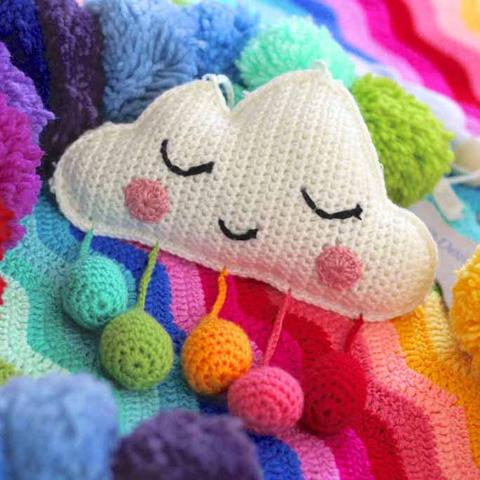
“I often think about how life has taken me on this journey,” she says. “I think a lot of people give up on the road towards building a successful business perhaps partly because they are either creative or good at management and so Leesa and I are a good mix because we are one of each, with a splash of the other for good measure! At the same time it’s so important to remember that there will always be set-backs, there will always be times when things go wrong and it’s how you get over those times that really counts. We are still absolutely committed to the core ethics of the business – providing beautiful, functional and not too expensive toys to the world, and that’s what keeps us motivated.”
It isn’t hard to imagine that in a few years time there’ll be a book about this extraordinarily successful local business, not to mention inspirational quotes a-plenty from Kate Nicholson.
For more information go to: https://www.obdesigns.com.au/
The post From Lennox with Love to the Kids of the World appeared first on .
]]>The post Sue Spence’s Horses Healing Humans goes international appeared first on .
]]>It’s not difficult to imagine Sue Spence as a child – she’s talking to me about her childhood in the south island of New Zealand, growing up as the horse-obsessed child of non-horsey parents, and the lengths she would go to go riding. “It really didn’t matter whether it was sleeting, snowing or blowing a gale,” she recalls, “I would get on my pushbike and cycle off to my horse in all weathers. It was the only thing that made me truly happy, and for many years I competed as a show jumper.”
But then trouble reared its head in the form of an unexpected illness. “I’d moved from New Zealand to Australia,” she says, “to Queensland, and I was leading a pretty busy life. I have ADHD, and so for me it was nothing to teach six aerobic classes and then go home and go for a ride, but really I was running on adrenalin. I was the kind of rider that they describe as having a ‘hot’ seat – I could make even a quiet horse jump for the moon!’
But although she felt as if she was coping, in fact 15 years ago her life was rocked to its foundations after she was diagnosed with early breast cancer, and it was recommended that she undergo a double mastectomy and reconstruction. “After 30 years of living life at blistering speed – running fitness centres and show jumping, I realised I had to do things differently,” she says. “I moved to a quiet place in the country, and I began to my training in horse whispering, which meant I needed to use a calmer energy.”
Not that it went so well in the beginning. “The first time I tried to get my horse to walk quietly beside me, I was so pent up with anxiety from the cancer and running my gyms, that I was just like ‘go…go…go!” she laughs. Suffering from acute anxiety after the breast cancer, she had to learn to become calm and still. “Nobody had ever taught me that,” she says, “and my ADHD combined with my natural tendency towards fitness just meant I had no idea how to drop into a still, quiet place.”
Sue’s obvious sense of humour shines through as she tells the story of her immersion into the skills of natural horsemanship. “One of my most amazing mentors has been Ken Faulkner,” she says. “I did a clinic with Ken, and I remember I was having a little trouble getting my horse to do something I wanted him to do, and he said, ‘the problem is you have a lot going on inside.’ I was so annoyed. “What do you mean?” I shouted at him, “I’m perfectly relaxed!!” But of course, I was nowhere near relaxed and he spotted it immediately. It was a life-changing moment and it took a horseman to bring me out of my anxiety,” she says, still – I have to say with what you might call a fanatical show jumper’s slight tone of disbelief.
But after learning the tools of the trade, and discovering what a massive difference it had made to her, Sue’s evangelism for a cause kicked in. Her training as a personal trainer and lifecoach became invaluable when she began to run groundwork workshops for women with issues around boundaries and self-esteem. Some women would break down doing her simple ground exercises, because they had never realised how their body language undermined their verbal language.
The whole point being of course, that natural horsemanship, in whatever manner it is taught, is a physical language that allows the human to become a horse ‘leader’, in a non-threatening, strong way, where the verbal and physical language they use is congruent.
But for anyone who has ever thought that you needed a ton of space, horses and equipment to create what has now become an international program with licenses provided to approved practitioners in three states of Australia, you can think again! Her business, Horses Helping Humans™, and her registered charity, the Horse Whispering Youth Program, started out with exactly the same horses she has all these years later – two Shetlands, Mindy who is 28 and Yogi, her 17-year-old son, Larry a 11-year-old rescue mini-pony who lost an eye and Sue’s beloved 28-year-old Quarter Horse,
“People think that when they come to my place they’re going to see something grand, and they get here, and I still have my little motley mob on less than an acre,” she laughs. “But as the program progressed and we began to work with the Department of Youth Services in Queensland, we were able to apply for funding, so now I have a little grandstand, a shade sail over the roundyard and an outside toilet,” she says proudly.
(At the time as building up a business, there was also the family to consider, and if you happen to be a Bacholerette follower you may have noticed Sue’s name used in a completely different context – as the mother of Gold Coast entertainer Apollo Jackson, who was recently a hot contender on the show, and has inherited not just his mother’s energy levels, but also her love of horses.)
For those who might assume that at some point along the way strategies, business-plans and trademarks would have been part of her thinking, she’s still in awe at how the growth of the program has pretty much taken care of itself.
“I can’t even begin to tell you how much serendipity is a part of what I do,” she says. “It’s as if the universe wants HHH out there. Just for one example – when I ran a corporate workshop in Rockhampton one of the practitioners was a business man who told me I needed to go home and protect my IP. I didn’t even know what was! Then later on he asked me again if I’d done it and when I said no, he basically told me I had to do it. I was terrified because I didn’t understand it at all, but then I said to him, well, can I set the license up the same way they did with Les Mills Body Pump licenses, because I can do that – and so that’s what happened. Everyone is trained to a certain level, it’s easy to run and it’s all been based on the Les Mills model because I was a fitness instructor!”
In Rockhampton more synchronicity took place when the local Heritage foundation stepped into support the program. “The people who wanted to start it had no space, and no horses,” she says cheerfully, “so that was going to make it a little difficult, but the Heritage park offered their heritage horses and use of the park and so we were able to set it up.”
In New Zealand it was a magistrate that decided the country needed the program for repeat offenders, and that is exactly what it is being used for. “In Victoria, on the Mornington Peninsular, the license has been brought by a very high-level Parelli practitioner who has an indoor arena, an outdoor arena and a huge American-style barn,” she says, “so really you can see it’s just spreading its wings in whatever way it can.”
The license fee includes all training manuals, the training of a facilitator, public relations, visits from Sue to various local businesses to promote the program and connection to youth service and other government agencies. “What we do is that the facility that is going to run it is fully operational with clients booked from day one,” she says, “people are 100% set up to run it by the time it opens with full backing from their community.”
One of the reasons why the program is so popular with the Department of Youth Services is that they can measure its success. “The essential point of the program – no matter who else it is used for, is that it’s aimed at disadvantaged and at risk youth,” Sue explains. “After thousands of teenagers have gone through this program, they are able to track the success of it by the number of teenagers who have gone on to university, or improved their performance at school, or stayed in school when they were in danger of dropping out – that’s why we have such a good reputation, and why it was so important to make the licenses are done properly.”
Horses Helping Humans also has a connection with Griffith University whereby interns do up to 50 hours volunteering as part of their degrees. “For us to have volunteers who are studying psychology, criminology or business is priceless,” says Sue.
All the students the program works with are referred by youth and family services, school chaplains or counsellors, mental health organisations, child protection, homeless youth and the Justice Department.
It perhaps wasn’t surprising – or only surprising to Sue at any rate – that a publisher became interested in her story. “When they first rang me they left a voice message,” she says, “and I was so busy that I hadn’t even got around to to calling them back, but a friend who’s involved in writing heard the message and said to me, ‘Sue, Pan Macmillan are one of the biggest publishers in Australia, call them back NOW!’”
She did, and a contract followed – but for Sue whose ADHD does not allow her to sit still for long, writing the book was just too hard. “I can’t write a shopping list without getting bored,” she says. “I had no hope with the book.”
Enter serendipity again. “I was at the hairdressers and I was talking about my problems with the book,” she says, “and this woman popped her out from a dryer a few chairs down, and said, ‘Sue Spence! Is that you?’” It turned out to be an old friend of mine who was now working as a transcriber – and she offered to come and transcribe my words for me, so I could walk up and down as much as I liked while I dictated my words, and she would write them up. I think we did the book in record time!”
The book gained Sue Australia-wide publicity that brought in new supporters, and even more ideas for how the program can expand into the future. In the meantime the first Horses Helping Humans conference is taking place soon on the Mornington Peninsular, and Sue is in huge demand as a public speaker right around Australia. I wouldn’t be surprised if you could make that right around the world within a few years – a bit of serendipity allowing!
This story first appeared in the December issue of HubVibes – to subscribe to the free monthly magazine go here: equestrianhub.com.au/publishing/
To find out more about Sue Spence and the work she does, go to: Horses Helping Humans . In 2014 Sue Spence received a Women In Business Awards for Community Dedication and in 2016 she was awarded a Business Award for Creating Change.
The post Sue Spence’s Horses Healing Humans goes international appeared first on .
]]>The post Marie Craven – from cattle station to cutting edge appeared first on .
]]>When film director Marie Craven moved up from her very inner-city life in Melbourne to the Gold Coast in 2002, it was a bit of a mid-life crisis for her. “I always had an odd relationship with Melbourne,” she explains to me over a coffee in the coastal town of Palm Beach where she’s now living. “Artistically it was brilliant for me, but even though I had really walked away from background in the country it was such a primal place that I think that part of me always craved to be back in big space, if you like, where you can see the skies and the horizon,” she says. “Living within close distance of Mt Warning, the ocean scapes and the hinterland of the Gold Coast, I get that space, and for me it’s been a good compromise.”
The filmmaker who has really carved out a niche for herself with her experimental videos where she works in collaboration with poets, writers, musicians, and others to create miniature works of art, first started her experimental career, long before the age of technology, as a student in Melbourne.
“I originally wanted to be an actor,” she says. “I started in the theatre when I was only 15, but then unfortunately I was diagnosed with Chrone’s disease when I was 18, which can virtually destroy your immune system and to be an actor you have to have physical and emotional resilience and I simply wasn’t strong enough, so I began to pick up media studies, and it wasn’t long before I was making short Super8 film.”
Melbourne’s grungy inner-city life quickly brought out the avant-garde in the country girl, and studying with filmmaking legend Arthur Cantrill, AM, further cemented her desire to make experimental films. “Film was my whole life,” she says. “I even married one of my teachers, Adrian Martin, who was a film critic for The Age, and I really plunged into the world of the Super8 experimental film. I worked in every way that you can on films, but one of the things I was very interested in was narrative form, which is not normally an experimental filmmaker’s interest. I tried to combine narrative form into my films, with quite a degree of success.”
That success included getting funding for three short films that did very well on the international circuit, and with her career taking off Marie chose not to finish her degree but supported her film-making habit through teaching and assessments.
But unfortunately for Marie, her Crohn’s Disease – which causes very painful inflammation of the intestines – kept flaring up in the hotbed atmosphere of city life, and so she decided to make a lifestyle change and head north.
Life many of us, Marie found that work for creatives was in short supply and had to set about reinventing herself in order to make a living. “I found myself branching out into all sorts of things,” she recalls. “I entered a short film in the Currumbin Film Festival, I set up my own short screenwriting course at Kingscliff TAFE, and I started doing teaching work at Bond University. I had to work very hard to earn a living – I was even doing data entry for some lawyers in Brisbane, and at the same time I was starting to do the occasional video project. Because I’d always been a director I’d never been really hands-on with the computer, but as I learned more about it, I started doing some quite wild experiments with what you could do, which really took off in about 2007.”
One thing led to another, and Marie soon also found herself immersed in a whole new world in which working on the internet with people around the world offered her a way of combining all her film and dramatic interests with extra layers of music, vocals and experimental video techniques. “I partnered with a musician from Cardiff, Paul Foster,” she says. “We started a project called Cwtch, which is a Welsh word meaning hug, or safe place, and we’ve now been working together for some years, creating music and video collaborations.”
I first discovered Marie’s work after she had put a poem by a mutual friend – poet Amanda Stewart – to music. Often Marie is inspired to work on spec, and hope that the people whose work she’s adapting enjoy it. “I love the process of making these videos anyway,” she says, “and when I present them to people they seem to really appreciate them.”
Our introduction led in fact, to our own collaboration of videos she created to two of my poems, which in turn led to an invitation for both of us to work on an international poetry project with well-known UK video and poetry collaborators Helen Dewbery and Chaucer Cameron (elephantsfootprint.com) which will be released in the next year.
Poem: Kim Mannix makesmesodigress.com Music: Adi Carter soundcloud.com/adicarter
Images: Flickr Creative Commons; Video and Voice: Marie Craven pixieguts.com
Talking to Marie, it strikes me – not for the first time – how curious it is the way that our lives ‘shape’ us. Her early years in isolated country seems to have given her a rich internal life – what she describes as her “dreamscape”; her years in Melbourne gave her work an intellectual edgy quality; her move north necessitated a new way of working – one that led her to discovering a ‘family’ around the world. “I think moving north was very instrumental for me in breaking out of the way I’d been working into these new collaborations,” she says. “It informed my work in two ways – I was inspired by the light and the landscape I found myself in physically and at the same time I had to find a way to connect with creative people to stay sane.”
Over the past year, since I first worked with Marie she’s notched up some extraordinary achievements including winning the recent Ó Bhéal International Poetry Film Competition. Her films have also been screened at festivals around the world, in Portugal, Spain, Germany with the UK and the USA on the cards for later this year. Her latest project, with UK spoken word poet Lucy English, entitled The Last Days, has just been completed.
Marie is truly an example of how international borders these days mean nothing to the creative universe as she continues her worldwide collaborations from her home on the Gold Coast.
You can see Marie Craven’s work on vimeo here: vimeo.com/mariecraven
For our collaborations go to: vimeo.com/174154097 (In the Forest) and (In the Temple) vimeo.com/176593832
The post Marie Craven – from cattle station to cutting edge appeared first on .
]]>The post Tea with the Colourman appeared first on .
]]>Early in the 90’s, David Coles moved from England to Australia bringing with him his passion for pigments, his expertise in art supplies and his youthful determination. What he could not know at the time though is that this red continent would offer him something most unexpected and surprising: a desire for new colours.
David’s first factory’s location – on Langridge Street – gave his company its name and, despite rather what he laughingly calls “bohemian” beginnings, hard work and excellence always flourished there. Manufacturing professional quality oil mediums, varnishes and grounds to supply artists with artist grade dry ground pigments and other quality raw materials kept David happy and busy for nearly two decades.
But being the invisible medium of the oil paint world was not his long term dream. Urged on by artists who told David they wanted a paint of the same quality as his mediums, Langridge’s Handmade Oil Colour finally came on the market in 2011. The company started its foray into paint modestly, with 32 on the initial production line, and eight extra added 18 months later. That was only three years ago, and last year they added 16 new colours, with the intention of having 80 colours on their final list.
This May, David is celebrating the first quarter of a century of his ‘young’ company – young in the colour world that is – with a delightful exhibition about pigments, colours and paint making, Chromatopia, opening at Tacit Contemporary Art space in Melbourne on May 31.
In a perfect match for a paint-maker, David’s partner Louise Blyton is an artist who runs an art store in Melbourne – full of all the Langridge products and the Golden acrylics David distributes here in Australia. Their enthusiasm for their projects and creations is infectious – and I’m increasingly intrigued, as they talk about their love of paint, about the title of Master Paint-maker. It certainly isn’t an honour bestowed on everyone. David tells me that the name reflects the dedication involved with the formulation of paint from scratch. “Being a Master Paint-maker as well as the founder of Langridge Artist Colours, I’ve grown very sure about following my philosophy of what paint should be. For me paint should not only have the highest pigment load possible to so that artists can get as much colour of the paint as possible, but it should also have a certain feel,” he says.
As he describes the quality of paint, it sounds almost like a chef describing a cooking method or food. “The paint is going to be reflective and honest about the way the pigment actually is and creates certain qualities. You have some colours that are naturally soft and quite fluid. Some which are quite buttery,” he explains. “Some are quite stiff, some clotted. It’s the pigments’ action upon the vehicle used creating that. You don’t see that with most of the other paints out there because they use some additives, mostly stabilizers, in quite large quantities which, in essence, homogenizes and evens out the natural qualities of each colour. I think that a pretty important part of an artist’s craft is understanding how paints operate slightly differently from colour to colour because they reflect what the pigment is actually all about.”
Despite the title however, it’s not exactly a degree you can go somewhere to obtain. This title is really learned on the job. “There’s nowhere you can go and learn to become a Master Paint-maker,” says David. “I learned a lot of my craft when I went to work for Roberson & Co. back in London in the 80’s, but in the end, I really learnt it on the mill. When you’ve got wads of colour coming at you from the triple roll mill, you start to learn. For example, with modern colours where you have to tease the colour, the pigments need to be separated from each other much more gently whereas the older inorganic pigments, like the Cadmiums and the Cobalts, are much easier to disperse – and something like Zinc White, which is a very soft pigment, needs hardly any work done to it to actually make it into a dispersed paint. And when we talk about dispersion, I’m talking about separation of the pigment particles evenly throughout the actual vehicle so that all the pigment particles are separated from each other and coated evenly in the minimum amount of oil possible to make it into a paste. Which is what we call paint!”
If there is a range of colours that are perhaps more difficult than others to work with, it’s the earth colours. “Some of my children are very obstinate,” David laughs. “The Umbers are very naughty. They’re thirsty pigments so they need a lot of oil. Our Siennas are naturally of a gritty consistency and that’s not because we’ve under-milled them but because that’s the nature of Sienna pigments. The Earth colours, because they’re naturals, have their own real individual qualities.”
I’m intrigued by the use of the word ‘our’, but as David explains he now has long term relationships with the major pigment manufacturers around the world. “I buy from the Germans, the British, the Americans, the Taiwanese, the Japanese, and we select pigments that are built to the specifications we need as artists. The most important factor is that they are not reactive with other painting elements, like solvents, that there is no solvability etc. and that they are highly lightfast. Also that, when they are dispersed, they have a working quality that makes a paint artists can work with,” he says. “There are now a lot of pigments available that are surface coated. For example, these days most Titanium White pigments have some kind of surface treatment which allows it to be dispersed in different types of vehicles for different applications. We’re offered a vast variety of them and so we have to be ultra careful about what we choose. It would be very easy for someone to be waylaid and pick the wrong pigment. You have to know a fair amount about chemistry. Not that I’m trained as a chemist, I trained as an artist. So my starting point is always – are these colours artists will want to use?”
Originally David had imagined that he would become an artist. “In fact,” he says, “I don’t think I had any doubts about that – actually I still am an artist. I have a studio, I still go in the studio although not as much as I used to, but my art informs very much what and how I make the things I do. Also my conversations with fellow artists don’t stop at selling them or supplying them with materials, it’s a constant ongoing conversation. All my friends are artists. I go to their studios, gallery openings, and over dinner at home we might start talking about their painting. I’m very open to helping artists because it feels, naturally, the right thing to do.”
His Australian career came about by accident when he first visited Australia on a holiday while he was working for an art retailer in the UK. “I became aware of what was available to Australian artists. Obviously there were a couple of Australian manufacturer’s brands here. Having worked for Roberson & Co. and in their venerable art materials store in London, Cornelissen & Son, I knew a lot about art materials and the benefits/negatives of each raw material that goes into a manufacturer’s formulations and products.”
One of the biggest issues for David remains the use of linseed oil, which he uses as a binding oil for paint. “It’s magnificent,” he says, “but obviously it’s kept to an absolute minimum because used excessively, particularly in mediums, it promotes yellowing. The mediums that I could see here were basically, unfortunately, detrimental to the artists’ practice. So that’s why all of the Langridge’s fluid mediums are based on stand oil – polymerized linseed oil because it’s a non-yellowing oil. So I very quickly realised there was a gap in the market for a world-class medium for artists. Before I came back out here, I knew what I was going to do: set up an artists’ products manufacturing company in Australia. Even then I knew I wanted to make paint.”
David began his company by formulating mediums, rather than the more usual manner of creating paints for the simple reason that it was all he could afford to do at the time. “It took me seven years to be able to slowly find and buy all the machinery needed to start making paint,” he tells me. “The first mill I bought was a small mill. We still use it in the factory to make very small batches and often now trial batches. But it took me many years to be able to afford to get to that stage. So I started making oil paint mediums, which I formulated myself from scratch, again knowing what I wanted to get out of a medium for myself and what I knew was important for artists.”
Listening to David describing paint and pigments is fascinating. “Of course,” he says, “pigment is pure colour. Some disappear and we introduce more colours but, as a general rule, we stock and sell about a hundred pigments here because some artists want to make their own paint and because they are so delicious in their nature as pure colour. In the paint something has already been denatured. It’s colour with a binder and depending on the binder, it can alter the optical vibrancy of the paint. Ultramarine is a classic. You can see the pigment vibrate but when mixed with oil it becomes very dark. You have to add white to it to start to see that light come back into it. I’ve always been in love with pigments anyway. I remember when I was around eleven and my mother had opened up an art shop in Henley where I grew up, and one Christmas she gave me a set of pigments, just little 30ml pigment jars and it was for nothing else except to be able to look at them. Like jewels.”
David has also always been interested in the history of art materials. “I’ll experiment by making something using a 14th or 15th century recipe… at the moment I’m making a traditional walnut ink made from their husks,” he says. “They’ve been fermenting in the pot for about two years now and the fermentation breaks down the sugars which creates a darker colour. I’ve also made a whole set of traditional lake colours from dyes. Things like Brazil wood and turning it into pigment and in the same vein I want to make some genuine madder but these are not commercial exercises this is purely out of curiosity and to understand I suppose how pigments used to be made and probably from that realise over again how incredibly lucky we are now. I’ve always been a big believer in this idea of science and art, technology and art actually, working hand in hand. I mean the history of technology is always written out of the history of art in regards to why artists started to paint in a particular way. Often it has to do with a technological breakthrough not an aesthetic or cultural breakthrough.”
What David is constantly striving for is a quality of paint that can compete with the best in the world. And that, in turn, feeds into his desire to create paints that reflect Australia. “Do I think there’s room in the world for another paint? There are already quite a lot of brands out there,” he says, rhetorically. “Where I think Langridge can make a difference is because of my interest in these modern highly chromatically intense colours. Creating a palette that reflects the Australian light in a way that light floods and energises the colours that it strikes and which comes from the dryness of the continent. There’s very little moisture, there’s very pure light and the scale of the skies are enormous. It doesn’t really afford the opportunity for much shadow. And when you do get shadows, the shadows vibrate as well. They become violet and vibrate that way.”
He is determined to offer an Australian palette in his range. “I suppose for example, that Zinc Blue attempts to fill the colour space that used to be filled by the old Manganese Blue which is a pigment that has not been in production for almost twenty years,” he says, “and that particular blue is very relevant to the Australian sky and Australian water, especially ocean water which has that kind of brightness and again that lack of moisture, or perceived lack of moisture to the eye because of the blueness of the sky as it strikes a liquid material! It’s the same with our Cold Brown Oxide. It’s a blend that replicates a colour very useful for artists, an old colour that was Cassel Earth or Van Dyke Brown. Those pigments unfortunately have strong problems with regards to drying rates, they’re very erratic. So, once again, I wanted to create another blend for this colour so useful to artists in particular for creating receding shadows, etc. without those drying problems. Of course as we go to the 80 colours, yes there is going to be more blends. And then I’ve got to be extremely careful about why I’m making them. That’s why I’m interested in what we call our brilliant range. We already had Brilliant Pink, which is almost like a hot bubble gum pink and have proceeded with a Brilliant Magenta and a Brilliant Green and we’ll continue to expand that range. The philosophy of that range is to offer the kind of vibrancy of a fluorescent pigment, but highly lightfast. So, again, these non-real or unrealistic colours are there because I know artists find them very useful.”
Talking with David it’s easy to feel that there was a sense of destiny to his arrival in Australia and to his career. “Langridge did have a sense of destiny unfolding,” he agrees, “a whole set of coincidences, accidental meetings, that led to me very easily settling here. And it’s interesting about you mentioning it being an old continent because Australia is of course the oldest continent with the oldest continuous civilisation in the world, and it’s something that I’ve thought long and hard about in regards to Langridge: what is our relationship with that part of Australian culture? I’m not working with a traditional aboriginal palette but we have a lot of aboriginal artists who buy our pigments and some of the very bright colours. At this point in time though, most of the indigenous artists I’m connected with work in acrylic paint not in oil. So there isn’t immediately some kind of connection to the actual materials. For the pigments we have a constant interaction and dialogue with communities West, up North and in the Centre. Our oil paint is not something they are particularly interested in at this moment. Acrylic is probably much more sympathetic to their painting style: waterborne, fast drying.”
Which brings us to the question of whether, in this age of fast-changing technologies, something as ancient as oil paint can survive. David is sure it can. “Oil paint is here for the future absolutely. I’ve made oil pastels, oils sticks, compressed chalks, charcoals, gouache, drawing inks, even shellac based ones…I do it more out of a personal interest, a curiosity. I would love to make commercially soft pastels but, again, there is so much to be done with oil paints I’m not quite sure I’ll ever find the time. Not just the oil colours themselves, I’m constantly inventing and formulating new mediums and new products when I see a gap in the market. A possible new tool for painters. I have just developed a more fluid medium, which has a more slippery quality than some of our existing ones, and a high impasto medium. We’ve been experimenting with some glass bead and we’ve just released a new encaustic wax… a modern formulation of a very traditional recipe. Encaustic, at this moment in time, is back in favour. We have a lot of artists interested in working as encaustic artists. All the materials available had to be brought in from overseas but I knew we could produce here a product as good, if not better, than those imported products. And again because I worked with encaustic 20 years ago, and on and off since that time, I do understand the working qualities and what this product needs to be, as a tool for artists. So far the feedback from encaustic artists with lots of experience themselves has been extremely positive. We do believe we’ve created something quite unique. Something we could even launch onto a world market and it fits, of course, beautifully into our pigment colours so in a sense it closes the loop all the way back to the very beginnings of Langridge. 1992 to now. A completion of the first circle really.”
Photographs: Sabine Amoore Pinon and David Coles
Sabine Amoore Pinon runs Still @ the centre, an art store in Byron Bay, and is a fan of great art materials. Check out her supplies here: https://the-centre.com.au She also writes a blog about her interviews with colour men and women all over the world. Follow her on inbedwithmonalisa.com
‘Chromatopia’ opens on May 31-June 18 at Tacit Contemporary Art Gallery – 312 Johnston St, Abbotsford Victoria.
The post Tea with the Colourman appeared first on .
]]>The post From country girl to costume designer appeared first on .
]]>We’re standing in a field, adjusting the fine details on a beautiful, flowing dress, covered with almost life-like moths – the soft, autumnal colours blending perfectly with the rural background. But we can’t get the mannequin to stand upright on the uneven ground.
“Why don’t you put some manure under it?” says Lisa Burton, to her fashion designer daughter, Annalise, “it’s dry – that should work.”
“Mum!” Annalise says, “yuk, no…let’s use sticks.”
It seems like a more hygienic option, but also a slightly less, what can I say, quirky option.
I’m here doing a story on 21-year-old Annalise, because she’s just heard that she’s been offered a place in the prestigious Costume Design and Making Degree at at Nottingham Trent University in England, and after the past four years of studying for her Fashion Diploma at North Coast TAFE, she’s over the moon that next year, her new crowd-funding platform permitting, she’ll be taking a major leap towards her career as a full-time costume designer.
I’ve actually known Annalise and her family for some years, since they adopted a rescue horse from me, and over the ensuing years I’ve watched the horse-mad teenage grow into an amazingly creative young woman – whose wellspring of inspiration comes from the beautiful 900-acre property the family owns at Mongogarie, about half an hour from Casino, in the Northern Rivers.
Chatting over lunch prior to our foray into the fields, Annalise tells me how her ambition to become a designer came about. “I’d really always thought I’d do something with horses, I wanted to be horse trainer,” she says, “and then in Year 12 at school I did my major work in textiles at Casino High School, and I realised I wanted to be a designer.”
But there’s major work, and there’s major work – Annalise’s first dress was made for her school formal, and it was literally a work of art. “To be honest when this dress started appearing in my imagination I was surprised, but I had an image of it, and it really came from there. I made it from vintage doilies, lace, and glass beads with French knots all through it,” she says, “and the skirt is made from hundreds of hand-made, machine embroidered petals, which I then melted to give it texture.”
It is, without doubt, an extraordinary achievement for any 17-year-old, let alone one making her first dress, and it didn’t take long for it to be snapped up for the Department of Education’s travelling Texstyle exhibition which showcases a small, elite group of the 3,000 odd students who study textiles for the HSC.
But despite the success of the dress, Annalise was still a few steps away from defining exactly what she wanted to. “I knew that I wanted to be in the sewing industry somehow, so applying to North Coast TAFE’s Wollongbar campus to do the diploma was an obvious step,” she says, “and I started to design one-off couture special occasion wear, which I enjoyed, and to support myself I also made clothes for children and babies and sold them at the local markets, but it wasn’t until I branched into doing the costumes that I suddenly knew that’s what I wanted to do.”
By the time Annalise graduated from TAFE this year, she’d already become a bit of a local identity. “We’d had some fashion parades, and my school dress had gained quite a lot of publicity, and so after I’d completed several costumes at TAFE, and just loved the process of expanding my ability to construct a garment, and the history of costume. I realised that what I would love to do more than anything is to design and/or make costumes for film.”
Having made that decision, Annalise started researching universities. “I discovered that most universities in Australia were only offering courses that covered what I’d already done,” she says, “so I took a deep breath and started to research universities overseas. I narrowed it down to the top five, and chose Nottingham as my top pick because they cover all aspects of costume-making, wig-making, puppetry, millinery, props, advanced costume construction and illustration.” To her surprise and delight she was accepted.
But unfortunately for the Burtons, their daughter being accepted into one of the UK’s most prestigious universities is just the start of the journey – the $30,000 a year tuition fees are a make or break situation for them. “My mum owns a gift shop in Casino and my Dad works for a milk-carting company,” says Annalise, “and we also raise cattle, but to raise that kind of money is impossible, so that’s why we’ve decided to create a crowd-funding platform for my tuition fees.”
On the day I’m out visiting to interview Annalise and photograph her nature-inspired creations, the family is in full fund-raising planning mode – with everything from selling Lisa’s fabulous Rocky Road to local shops, to auctions of Annalise’s one-off designs and a fund-raising local fashion parade.
We take a drive around the property, and on the way I’m introduced to the goat that thinks he’s a cow, the bull that turned up in their driveway one day and decided to stay, and Annalise’s little herd of horses. As we drive past the lagoon full of water lilies, with the clear blue sky, and the herds of cows standing in the dappled shade of the gum-trees, I do hope that Annalise will take her country inspiration with her to the other side of the world, and at the same time, I wonder how she feels about leaving her family, and the animals and home that are so important to her.
“I’m nervous but excited,” she tells me. “A few years ago I truly couldn’t have possibly imagined I would be doing what I’m doing now. It’s all a bit of a surprise to be honest. Sometimes I have to pinch myself to believe what’s happening. If I manage to raise the funds to get to Nottingham, I know that I will come out of that course industry ready, and a high percentage of students graduate straight into jobs, so I’m really motivated to do as well as I can. It’s an exciting future. I know I’ll get homesick, but it’s something I really want to do.”
If you’d like to get behind Annalise’s journey to Nottingham, email her on [email protected], and watch this space for her crowd-funding details.
Candida Baker
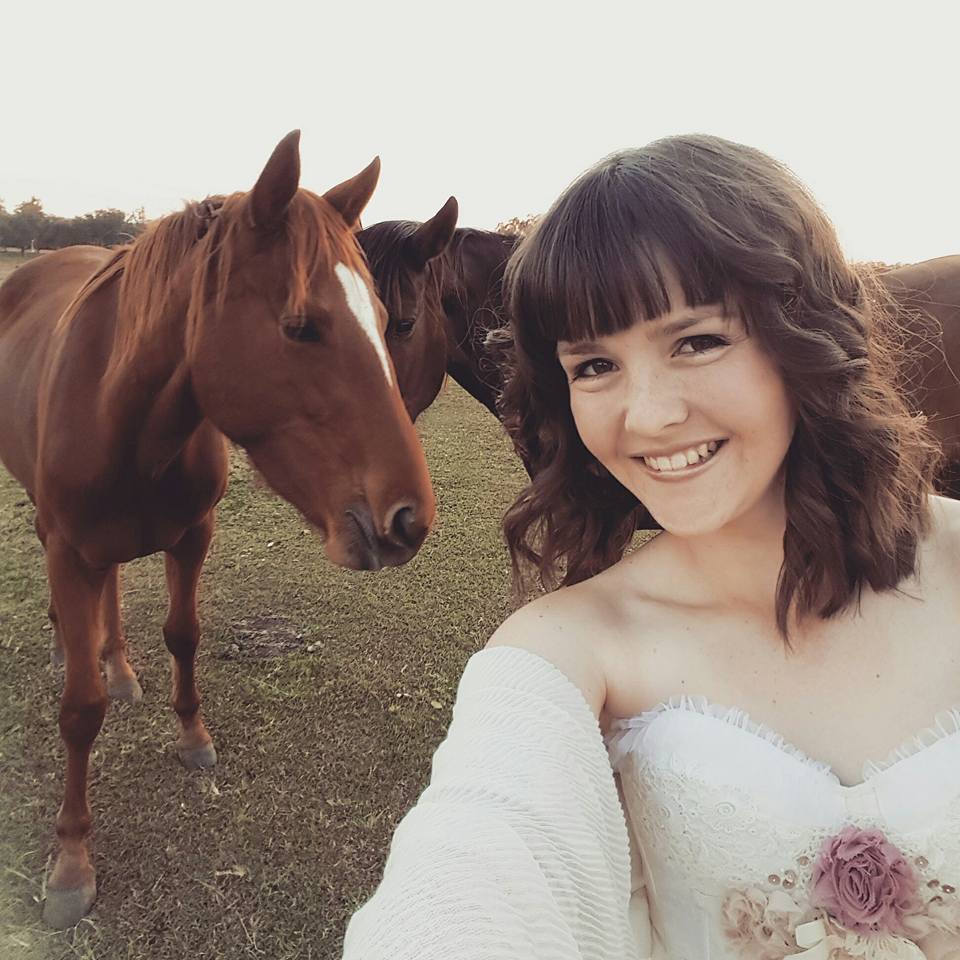
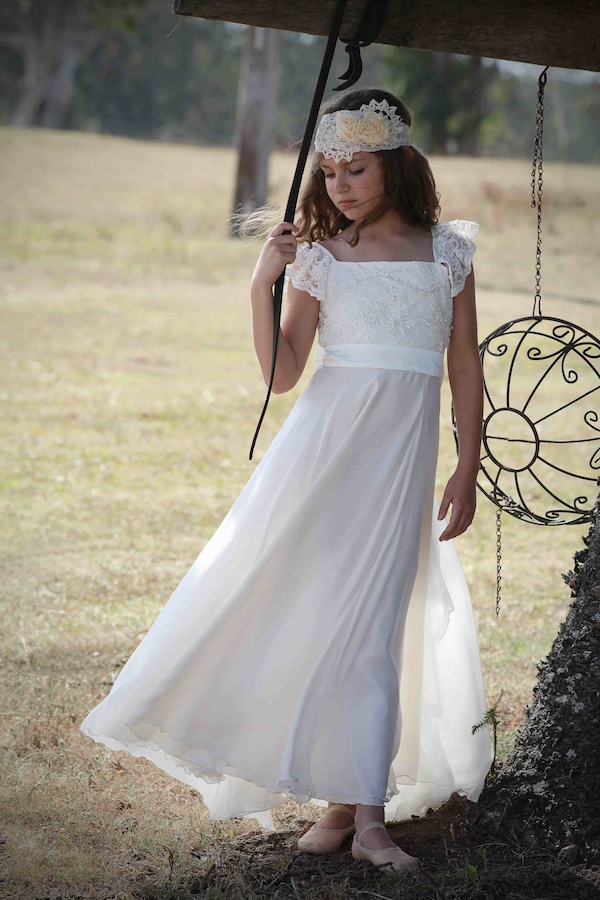
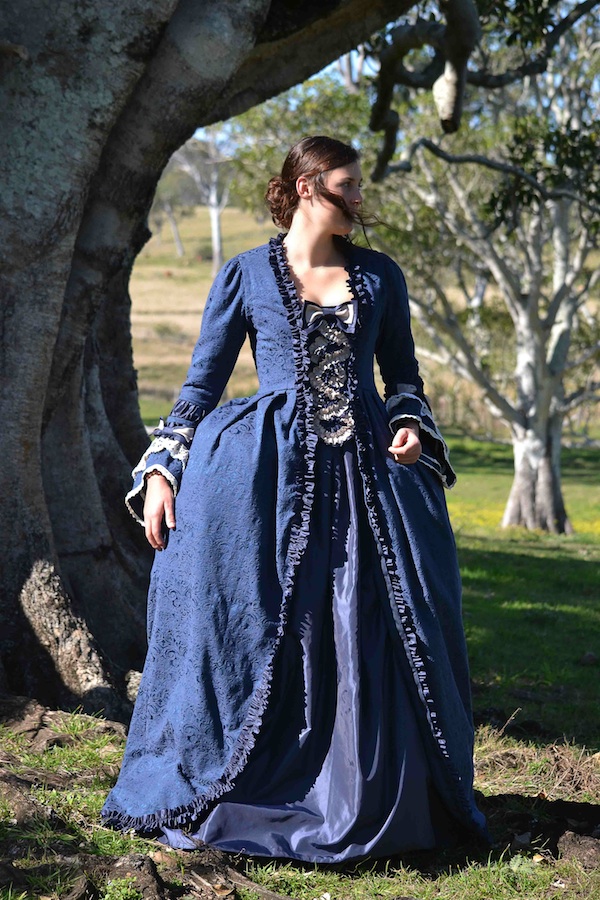
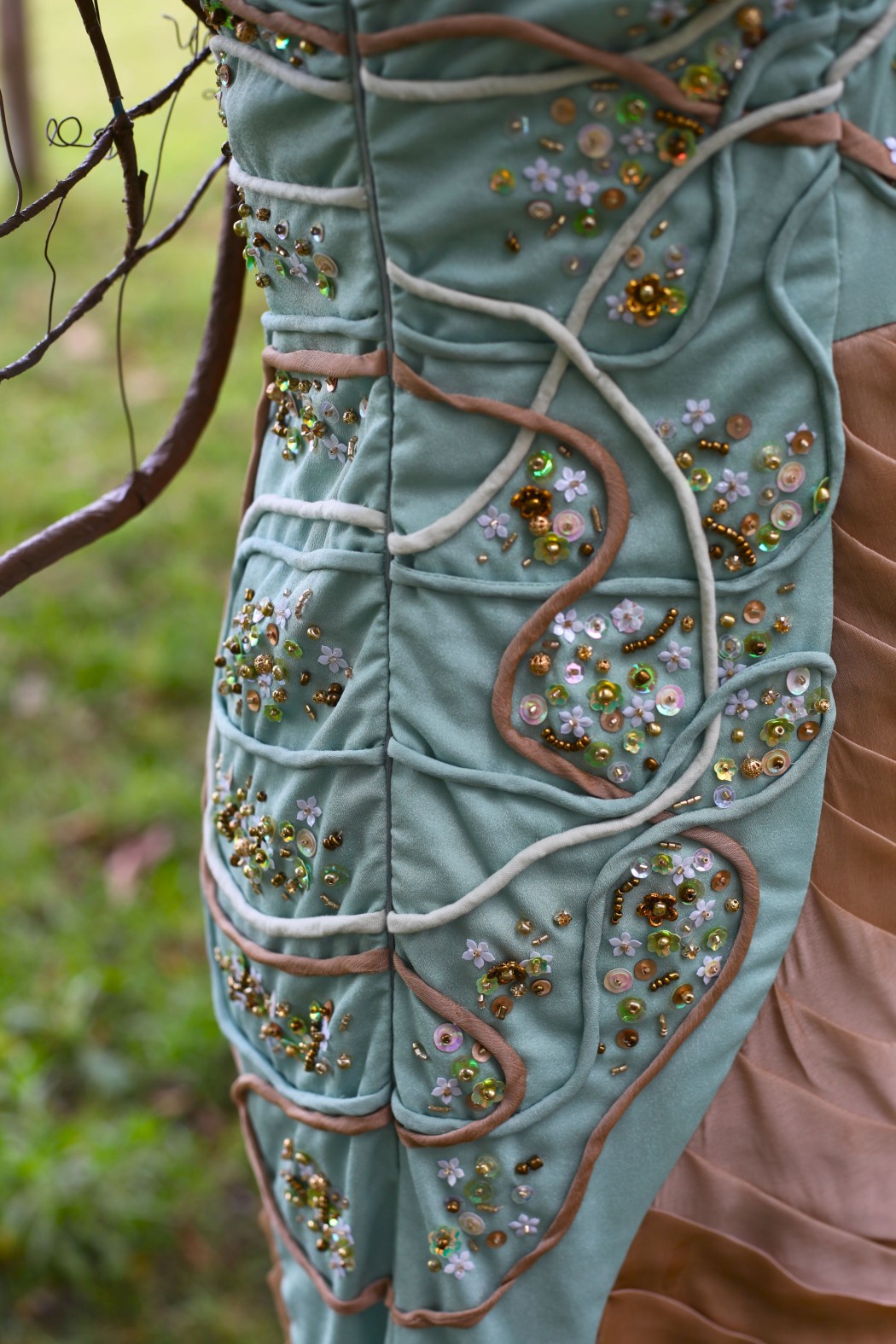
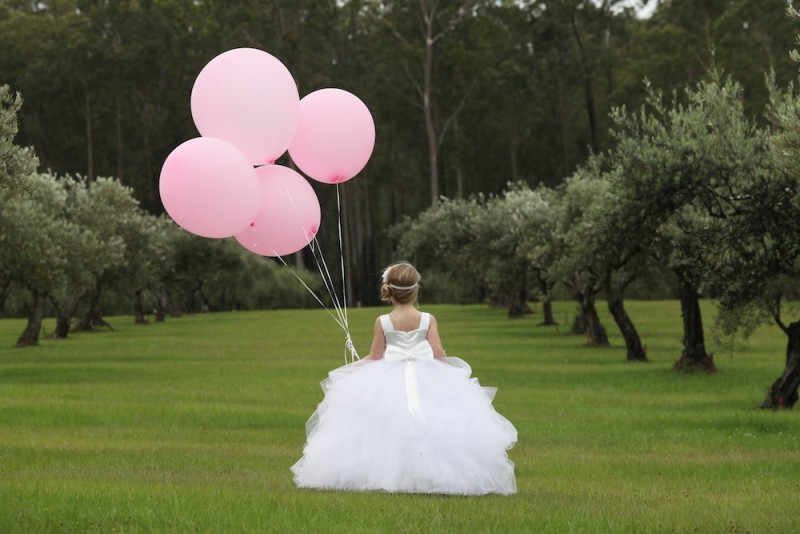
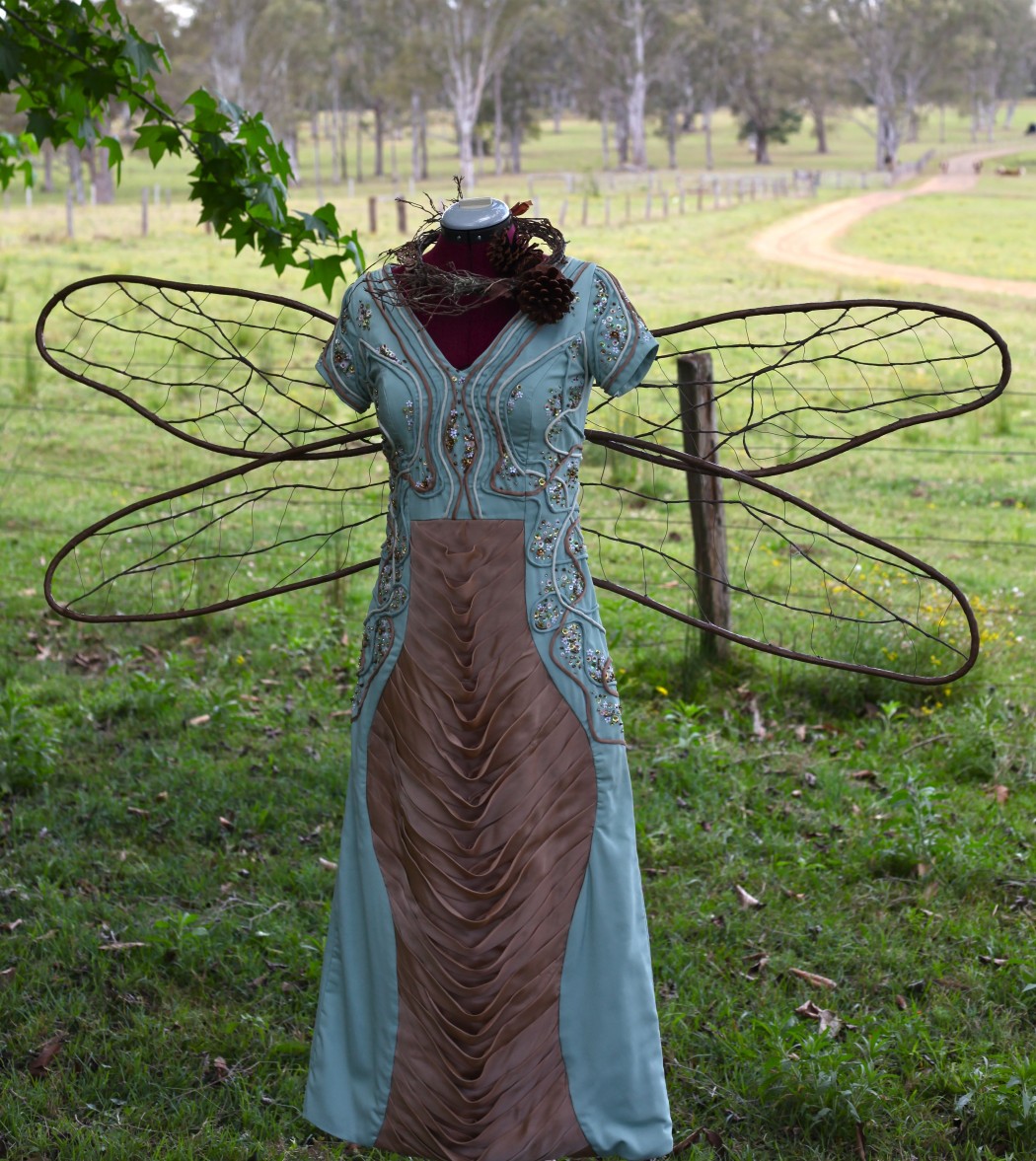
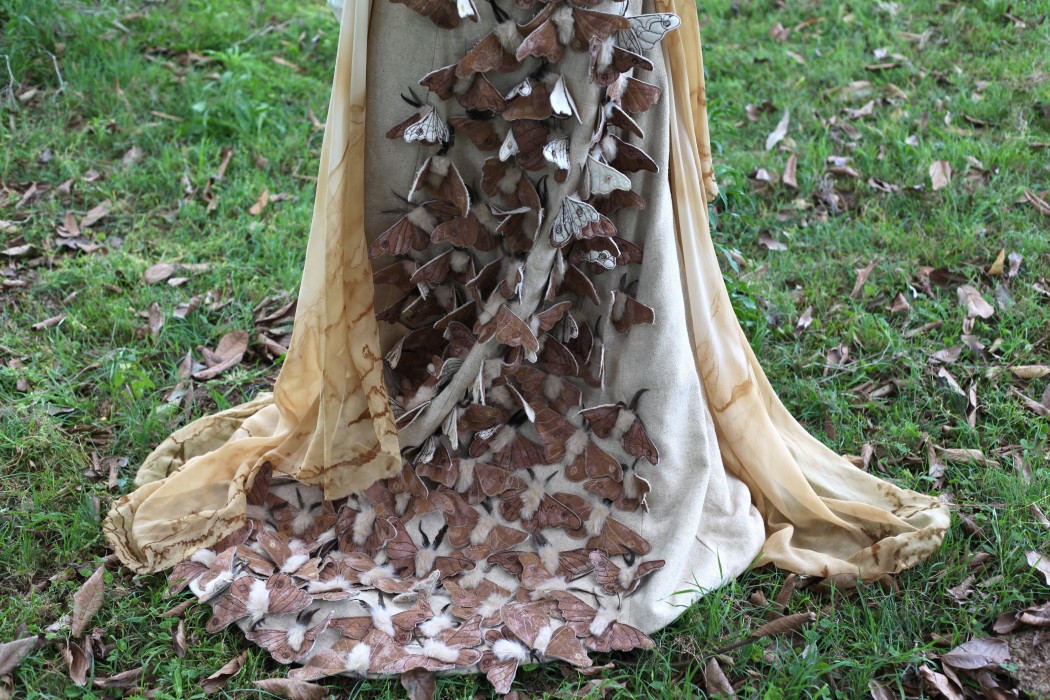
Flower girl photos: Jimmy Malecki Photography
The post From country girl to costume designer appeared first on .
]]>The post Ignite your light with Jerry Sargeant’s Star Magic appeared first on .
]]>There was a time, not that long ago when Jerry Sargeant thought that spiritual healing was, in his words: “A lot of nonsense. I honestly would have classified myself as a complete non-believer, but then about 12 years ago after moving house, my wife and I had a very strange experience. My wife, Laura, told me that every time she closed her eyes she saw dark images in the house, and heard dark voices which were making her very scared. Laura called a friend who was a priest, and she came around and doused the house, and did some rituals. The next day I told a friend the story and he recommended I speak to a lady whom he said he could help.”
Without knowing anything about the woman he’d been told to call, Jerry told her the story. “She asked for our address and then if we’d been knocking any walls down, and I said ‘no, we rent the property, but it’s obvious the previous owners have built an extension.’ She told me straight up that there was an angry old man in the house. It sounded crazy to me but I said ‘What are we going to do about it?’ She said, ‘I’ll get rid of for you.’ I said, ‘When are you coming down to London?’ She told me, ‘I don’t need to do that I can do it from here.’ At that point I thought this was madness, I was literally thinking what the hell is going on here. I said good-bye, went home and told my wife that I’d spoken to this woman and she reckoned that there was an angry old man in the house and Laura turned around and told me, ‘I know, I’ve seen him.’ I couldn’t believe it. Two people who have never met each other were telling me the very same thing’
But the universe, which certainly moves in mysterious ways, wasn’t finished
with Jerry yet. Delving a bit into his past for the story I ask him about his journey towards creating Star Magic and spiritual enlightenment. I ask him if he was always spiritually inclined. “No,” he says, “I was a criminal. My life included a decade spent involved in smuggling drugs and guns.”
Right. Not quite the answer I was expecting, but as it turns out his early childhood was almost a template for trouble. “I was adopted, and fostered,” he says. “To me it seemed as if I was constantly being rejected, and I felt alone most of the time. I never imagined being a criminal in the first place, but once I’d started, I couldn’t imagine not being one, it felt as if that world was my family. I was so lucky, even though I got arrested on numerous occasions and attacked many times I stayed out of prison and the graveyard. In many ways looking back on it I feel as if I was being protected so I would finally get the message!”
He gives an example of his feeling of being looked after. “We’d just dropped some cocaine off to a house one evening, and we were driving out of this cul-de-sac in a jeep when this car arrived, smashed into us and blocked our way, and out of it came three of the biggest guys you’ve ever seen with bars, chains and bats, smashing at the windows – but the windows didn’t break. At the time it even seemed to me as if the windows had turned to rubber or something, they seemed to absorb all the blows. I was looking at it, thinking what is going on, every second I thought it was going to break but it didn’t. In the end people came out from their houses, and these guys drove off. But then, only two days later, I popped into a shop for a couple of minutes, left my phone on the passenger car seat, and when I got back, someone had broken the window and taken the phone. I was dumbfounded. How on earth could three massive well-prepared thugs not break the windows, and then one person in broad daylight break a window easily and take a phone? It didn’t make sense, but looking back I really feel as if I was being protected to get the message about the healing power of Star Magic, and to see the evidence with my own eyes.”
It was during his darker days that Jerry was lucky enough to meet his wife, Laura, when he was working for a high profile criminal organisation. Meeting Romanian-born Laura was a bit of turning point for Jerry, who began to think about how he could escape the criminal world and get on the straight and narrow. He used his criminal talents to smuggle Laura and their then-baby daughter Aalayah into the UK. “After we got married, Josh who is eleven now, was born, and I just really concentrated on creating a great life for us all through a property business, I’d just set up,” he says.
Little did he know that there was another major turning point in his life coming up. “We were all on holiday in Romania some years ago when the taxi we were in ran over three ladies who were crossing the road,” he tells me. “I was asleep in the passenger seat – Laura and the children were in the back, there were no seatbelts – and it was in the early hours in the morning. All of a sudden I woke up to a loud bang, there was wind and glass everywhere, the car was swaying from side to side. I remember thinking we’d been in a really bad accident and we were going to hit the oncoming traffic or flip over then we came to a grinding halt. My daughter climbed out from under the driver’s seat, and Josh’s mouth was full of glass. I glanced at the taxi driver and he looked petrified. There was a huge hole in the windscreen, and my head was beginning to hurt. I opened the door and got out, saw two ladies 30 meters up the road and what looked like a dead body much further away.
The first lady was hit, she came through the windscreen, hit me in the head and then got sucked back out of the car and landed 150m up the road. The second lady had her ankles cut clean off and the third lady, physically was unharmed. I walked past the first two ladies as a nearby factory worker was on the scene. I was fixated on this other body. As I got closer I saw her energy hovering above the body, her soul, and then disappear into the ether, and literally in that second I realised that all of us are energy. The soul left. It was like someone taking an old car to the scrap heap. No love lost. The soul went on its merry way. I didn’t feel sad or upset. I somehow felt privileged to have witnessed what I’d just seen. I then walked back towards the taxi, and normal life took over again.”
Jerry had been fundamentally changed by the accident. A few months later when Laura had a headache he was sure he could help her. “I knew that I could pull her headache out,” he says. “I put my hand on her head, saw the headache, it was green. I grabbed it and pulled it out.’
It was the experience with their house in London that first motivated Jerry’s interest in the spiritual side of life. “It was the beginning of my spiritual journey because I was so impressed with the fact that two different people 120 miles apart, said exactly the same thing, and that’s when my curiosity was piqued. I began to visit the woman who got rid of the old man for us, and she took me into past lives, she showed me how to remote view, how to clear stuck souls and take them back to light and so much more – it was the beginning of a massive education. A real education.”
The London period marked the transitional phase for Jerry between his old life, and his new life. I realised that one of the things I wanted to do to give some money to charity. I asked my teacher if I gave her money would she be able to send it where it was needed,” he says. “It wasn’t long before I was hearing through her that the money was building roads, and wells, and helping people in Africa who were desperately poor. And it felt great to be giving – I felt like Robin Hood, it was brilliant!”
It was around this time that the car crash in Romania happened while the family were on holiday. On their return to the UK an opportunity presented itself to move to New Zealand, and build property there. Unfortunately, after a considerable amount of investment and hard work, the project fell over. “I was left in this situation where I had to find something to do,” says Jerry, “so I thought, well, one thing I understand is fitness, so I’m going to do that.” He started with personal training, but within a short space of time he had expanded to setting up his own gym.
It was while they were in New Zealand that Jerry had another healing experience. “My teacher back in the UK had been in an accident,” he says, “she was hospitalised and she was told she might never walk again, and that she would be in hospital for a year or so. Her partner phoned me and asked if I could help. How can I help I thought? I’m in NZ and she’s in the UK, but my intuition said lie on the bed with some crystals. I suddenly found myself in her hospital room, with light pouring from my hands. Mentally I put her body back together. I lay on my bed and did this many times over the period of a few weeks. She actually walked out of hospital with the use of a zimmer frame in 12 weeks. I doubted that what I was doing had had any effect but when she phoned me and told me that she woke up and said saw me and said Jerry, what are you doing here? I couldn’t believe it. She saw me in her hospital room when I was the other side of the world. That’s when I started to think about this stuff seriously.”
In New Zealand a friend had a copper pyramid in his garden which Jerry used to meditate in. “In one meditation, I was picked up in a space pod, best way I can describe it, and taken to another planet within the Alpha Centauri star system, and wherever I went he began to see ‘beings’, fairies, and angels.” As the lessons came thick and fast, Jerry realised that even though their business in New Zealand was successful it was time to go back to England. Once back in England things heated up again. “At one point the Angel Gabriel suggested to me that I write a book called ‘Into the Light’, and as soon as the suggestion was there I knew it was the right thing to do,” Jerry says. “I sprinted home, opened my computer, started writing, and this book poured out of me, as if it was channelled. I started seeing geometry and codes everywhere, I meditated more, and my meditations took me – and take me – on some extraordinary journeys into parallel worlds. My son and I went to ancient Egypt, every day for nine months, learning how to heal. We sat in classrooms and were shown ancient scrolls.”
Curious as to how to manifest this new healing power out into the universe Jerry decided to go to a spiritual fair and offer free healings. “It was amazing,” he says, “everybody loved it, and it just began to take off. I worked with a few people where we were able to get medical evidence of before and after, I set up a website, and Star Magic just grew and grew from there.”
In amongst all of this, Jerry decided it was time to search out his birth mother, and when he found her he discovered that his grandfather had been an Irish gypsy. “It suddenly made a lot of sense to me about who I am,” he says. “I’ve always been dark skinned, and when I was a kid people teased me about it, but there is that Spanish vein that runs through the Irish from the Armada, and the gypsies of course have always had the gift of second sight. If you go back further, the Egyptians moved through Spain into Europe, and Ireland is also part of the original Atlantis, so it all ties in.”
In many ways Jerry credits his wife for his turnaround towards a spiritual life. “When we were first living in Cheltenham my wife gave me a book about an Irish healer – Joe Cassidy, the diviner. I was blown away by it – here was this normal Irish guy who had built a business around his psychic abilities. I thought if he can do it, I can. But Laura has been instrumental in the whole journey – she stopped me drinking and taking drugs, she’s inspired me the whole way.”
It occurs to me that Romania, with its rich heritage of gypsies, and Ireland with its acceptance of the ‘fey’, are in many ways similar. It seems as if there must have been a sense of destiny for the couple. “Absolutely,” Jerry says. “I’ve come to know parallel realities, which other people would call past lives, and we’ve had a huge so-called past together.”
These days with Star Magic Jerry operates in that wonderful space of not caring what other people think about him. “I think once you find out what you’re supposed to be doing on this earth, then everything else drops away. I do seminars and talks most weekends, and I simply speak my truth. Sometimes I think that the levels of darkness I went through are equal to the levels of light I can travel through now – and I’m grateful for that. You need to become a master of the duality of light and darkness, and find complete and utter equilibrium, and that is when you harness the most powerful energy in – or out – of this universe.”
At home Jerry mediates inside a pyramid, and he exercises every day. His interest in health has meant that as he turned the corner away from his dark days, he’s learned about the power of giving. “Gradually I started to do things for charities, and this is something that is very important to me – if we can build roads, or wells, or implement permaculture projects in places where these things will make a real difference then that is an amazing thing to be able to do.”
As a healer one of the main tenets Jerry embraces is that everybody is the same. ‘I don’t care if someone is a judge, a lawyer, a drug addict or a businessman – everybody is the same to me. I see them as playing their role, for me the point is to have zero judgement towards anybody. Everybody is just as powerful as everybody else if they are shown the way to access their true light and that’s what I am to be able to do. I help people discover their power. As far as I’m concerned the more freedom Star Magic can create in people the better.”
Jerry is bringing Star Magic to the Gold Coast in September and he’s looking forward to it. “I can’t wait to visit Australia,” he says. “I wish I could fully describe what a Star Magic workshop is like – there is so much angelic presence there, so much love. I’m blessed to be able to do this work – and I never forget that.”
Jerry Sargeant and Star Magic will be at the Gold Coast on September 24-25 at the Nerang Bicentennial Community Centre. Contact www.starmagichealing.com for more information. He will also be giving one-on-one healing sessions.
Jerry Sargeant has numerous meditations and healing on Youtube/JerrySargeantML
The post Ignite your light with Jerry Sargeant’s Star Magic appeared first on .
]]>The post Hard Rain with a soft heart – Barb Jungr sings Dylan and Cohen at the Byron Theatre appeared first on .
]]>One of the inescapable facts of life as we get older is that people around us die. If we’re lucky those deaths are few enough and far apart enough for us to process our grief, absorb our loss and carry on. If we’re unlucky – well, it’s a different story.
Listening to Barb Jungr’s latest album, Hard Rain, named after the Bob Dylan song, there’s no question that one of the mesmerizing qualities this extraordinary singer brings to her interpretation of both Leonard Cohen and Dylan songs on the CD, is a poignancy that speaks of more than a passing acquaintance with life’s ups and downs.
When I talk to Jungr on a Skype call from a Starbucks café in New York, where she’s currently performing, she’s open about the tornado of loss that whipped across her personal landscape some years ago. “In quick succession I lost my ex-husband, my mother-in-law, my father, my best friend, my long-time collaborator and two of my sisters – all in the space of a few years,” she says. “One of my sisters died of MS, the other one died suddenly of a heart attack. It was a terrible period for me, a kind of Job like experience of losing almost everything. For a long time I kept waiting for the next person to die.”
Jungr believes that two things kept her going – her creative process and her European heritage. “I suppose what I mean by that is that I come from a long line of displaced people. My father was in war camps in Czechoslovakia and Germany, and I was born into a family traumatized by World War II,” she says. “We all know now that trauma goes through generations, and I think that coping with loss is something wired into people with my kind of background. But then, the fact is that very few people go through life without experiencing some form of catastrophe, and one of the advantages you have as a creative person is to use your experiences as a form of alchemy. To turn the base metal into gold – that’s really the job of an artist.”
In fact, says Jungr, something she is passionate about is the power of music to heal. “At the moment I am devastated by the cuts being made to the arts – in the U.K, the U.S and, as I understand it, in Australia. I wish governments would understand how healing the arts are – they have a very short-sighted view of the ongoing worth of the arts,” she says.
Jungr herself was born in Stockport in the U.K – not a town usually associated with the arts. “No,” she agrees ruefully. “People think of Stockport and they tend to think of the Moors Murderer, mass poisonings and plane crashes.” Another unlikely Stockportian was the writer Christopher Isherwood who wasn’t impressed with his hometown. “The sense of weather is overwhelming,” he wrote. “Every view drips with melancholy.”
But for Jungr Stockport was a “kind” place to grow up. “I always felt at home there,” she says. “I still do when I go back. I’ve recently been working on a long-term musical project with the town of Corby and it constantly reinforces my sense of belonging at some level to this northern tribe.”
Jungr’s first fully-fledged musical venture was with a band with the eminently forgettable name of the Three Courgettes, which she formed with guitarist Michael Parker and singer Jerry Kreeger. They become well-known on the alternative cabaret circuit, and Jungr also worked with the comedian Julian Clary whom she met when they studied at the University of London together. When the Three Courgettes almost inevitably went their separate ways, Jungr and Parker continued working together for many years, and in many ways it was their collaboration which cemented Jungr’s increasing reputation as a chansonnière – literally a singer of ‘chansons’, lyric-driven songs of the French style.
Curiously, despite her fascination with the work of songwriters like Dylan and Cohen, Jungr says that she doesn’t really examine how she creates her interpretation of their music. “The word interpretation is something other people say,” she says. “I’m grateful, but it credits with a process I’m not doing. I’m not really one for talking about what something means – for me the process is largely intuitive and completely unexamined.”
She’s the first to admit that this is somewhat odd given what she describes as: “Cohen’s almost anal grooming of his lyrics. But I think what I love about performing both of them together is that they are so different – Cohen is an examiner, Dylan is a stream of consciousness writer with, in my mind, a complete incapacity to examine his lyrics, and when you set them against each other it gives them a creative tension which makes for a fascinating juxtaposition.”
Over the past fifteen years or so Jungr has put out eleven albums, including Hard Rain which won her the Broadway World Award for best cabaret CD of 2014. Other albums include the fabulously titled Stockport to Memphis, and her latest album, Shelter from the Storm. Jungr is also a talented songwriter – discovering Till my Broken Heart Begins to Mend which features on Stockport to Memphis, was a rare treat. She also writes for children’s theatre, and along with the song-cycle she’s writing for Corby, she sees everything she as coming from the same source of creativity. “People tend to want to define you as an artist,” she says, “but I’m not really interested in the divisions. I’m interested in the whole – I love looking at the leaf, but I like to be part of the forest.”
One of the most interesting aspects of Jungr’s interpretation of Dylan and Cohen’s songs, is to hear them without guitar, but with the constant presence of a piano. It creates a live performance, cabaret ambience to the songs, and for this tour Jungr is joined on stage by John Thorn on the grand piano.
Looking at her gruelling performing schedule over the past few years I wonder if Jungr ever tires of the travel. “I’m not a great homer,” she says. “I think moving is in my blood and I’ve been doing it for so long it’s second nature to me. I have a little place in Pimlico in London and I love it, but I never really allow myself to get too attached. I enjoy being as free as a bird to be honest.”
This bird will be landing in Byron Bay for all of 24 hours on Saturday June 4. Be quick to catch her before she flies away.
Leave a comment in our FB boxes below or on our Verandah Magazine FB page to be in the running to win a double pass to Barb Jungr at the Byron Theatre on Saturday June 4.
Friday 3rd June – Queensland Cabaret Festival, Visy Theatre, The Powerhouse – Brisbane
queenslandcabaretfestival.com.au
Saturday 4th June – The Byron Theatre – Byron Bay
byroncentre.com.au
Tuesday 7th June – Vivid Festival, The Basement – Sydney
vividsydney.com/event/music/barb-jungr-uk-hard-rain-songs-bob-dylan-and-leonard-cohen
Wednesday 8th June – Street Theatre – Canberra
thestreet.org.au
Thursday 9th – Monday 13th June Adelaide Cabaret Festival, Adelaide
adelaidecabaretfestival.com.au
Thursday 16th & Friday 17th -The Bird’s Basement, Melbourne
birdsbasement.com
For full tour details visit www.barbjungr.com barbjungr.com
The post Hard Rain with a soft heart – Barb Jungr sings Dylan and Cohen at the Byron Theatre appeared first on .
]]>
















